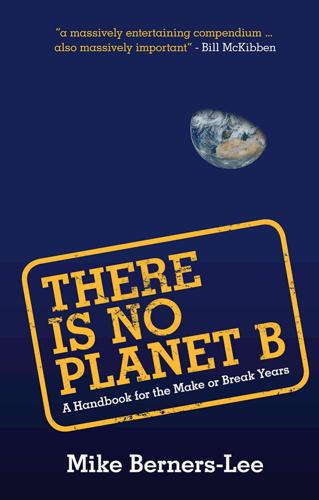
There Is No Planet B: A Handbook for the Make or Break Years
by
Mike Berners-Lee
Published 27 Feb 2019
Just before you go ripping out all your double glazing and deflating your tyres, note that I am not saying that efficiency gains cannot be useful in the future. But I am saying they are no good at all on their own. (It is only fair to write that the Jevons Paradox has been hotly debated over the years. More detail on this and why the deniers are wrong is in this endnote28.) By default efficiency improvements lead to greater environmental burden Efficiency Figure 3.8. The Jevons Paradox. 100% 84 3 ENERGY Given the catch, what can efficiency do for us? We badly need more efficiency, but we also need to learn not to squander it with increased consumption. We have to make efficiency work for us in a different way than we are used to.
…
What is the catch with energy efficiency? It goes hand in hand with an even greater increase in demand for whatever the energy is used for. In 1865 William Stanley Jevons spotted that if the UK used coal more efficiently it would end up wanting more of it, not less27. This phenomenon has become known as the Jevons Paradox. Energy efficiency leads, by default, to an increase in total demand, rather than the decrease that is often assumed. It applies just as widely today as it did in 1865 and it has gamechanging implications for energy and climate policy. It may be counter intuitive at first but makes perfect sense on reflection.
…
They might spend one of those nights fitting new insulation so that the coal becomes even more useful to them and the other night working by the fire to earn the extra money they need for their increased coal budget. However, the price of coal per tonne comes down a bit to help them because demand is going up so much and economies of scale are kicking in along with a stack of investment in new extraction technologies. And so it goes on. This is just a caricature of how the Jevons Paradox works, but I hope it demonstrates the principle. What is the catch with energy efficiency? 83 Resource Consumption Over the years we have become many times more efficient in our production of just about everything. LED lighting is hundreds of times more energy efficient than oil and gas lamps.

Aerotropolis
by
John D. Kasarda
and
Greg Lindsay
Published 2 Jan 2009
A “coal panic” ensued, leading to the appointment of a blue-ribbon royal commission. Five years later, it published the first detailed estimate of Britain’s coal reserves but managed to sidestep Jevons’s conclusions altogether. The public went back to sleep. Britain’s coal did not run out, and the isles didn’t become fully reliant on oil until after World War I. The “Jevons Paradox” still troubles us: The more efficiently you use a resource, the more of it you will use. Put another way: The better the machine, the broader its adoption. And there has never been a better machine for transportation than the jet engine. A pair of General Electric GE90-115B turbofans mounted on a 777 are capable of generating 230,000 pounds of thrust between them—enough to propel four hundred passengers between New York and London in six and a half hours, with gas mileage equivalent to fifty-five miles per gallon per passenger.
…
But the aggregate cost is still staggering: twenty-five thousand gallons of fuel ignited in the upper atmosphere. Fifty years of refinements have yielded engines cleaner by an order of magnitude, but any gains in efficiency have been far outpaced by exponential growth in the number of passengers—the inevitable result of falling costs and ticket prices. The Jevons Paradox illustrates why infinitely renewable, zero-carbon fuels are a necessity—because merely efficient solutions only postpone the day of reckoning. Peak whale teaches us how an entire way of life underpinned by a single source of energy can be transformed or vanish overnight thanks to timely substitution.
…
Peak whale ended when whalers “ran out of customers before they ran out of whales,” quipped the environmentalist Amory Lovins, who was charting paths to a renewable future before Jimmy Carter wore cardigans in the White House. So how will peak oil end? The Reckoning: Peak Oil You couldn’t ask for a more ominous example of the Jevons Paradox circa 2020 than the prospect of a hundred million tourists and traders transiting the Gulf on the New Silk Road. Anyone paying close attention to oil prices and carbon footprints might reasonably conclude that a Middle East remade in Dubai’s image is a looming catastrophe. There is a growing consensus among activists, energy analysts, and fliers alike that aviation is unsustainable at its current pace, ethically and economically.
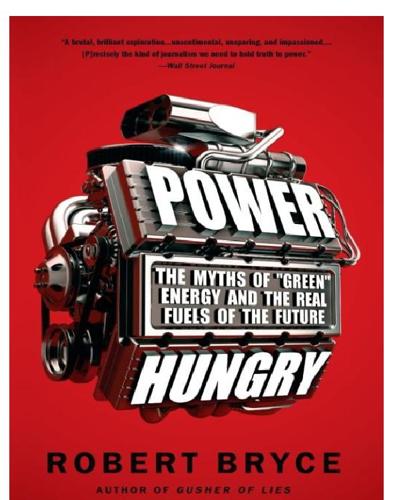
Power Hungry: The Myths of "Green" Energy and the Real Fuels of the Future
by
Robert Bryce
Published 26 Apr 2011
Increasing efficiency merely paves the way for greater energy consumption, a situation known as the Jevons Paradox. Named for the world’s first energy economist, a Brit named William Stanley Jevons, the paradox has only gained credibility in recent years as increasing numbers of researchers have corroborated Jevons’s work, confirming what Jevons said in 1865: “It is wholly a confusion of ideas to suppose that the economical use of fuels is equivalent to a diminished consumption. The very contrary is the truth.”27 Perhaps the most exhaustive analysis of energy-efficiency efforts and their effects on consumption was done in 2008 in a book called The Jevons Paradox and the Myth of Resource Efficiency Improvements.
…
(table) Jakuba, Stan Jamaica Japan(fig.) and carbon dioxide emissions and electricity(fig.) and energy consumption(fig.) and energy intensity(fig.) and natural gas nuclear attacks on and nuclear power and nuclear waste ranking of, by GDP and electricity generation(table) Japan Steel Works Jevons Paradox Jevons Paradox and the Myth of Resource Efficiency Improvements, The (Polimeni) Jevons, William Stanley Jobs “green,” and the oil and gas industry John Birch Society Johnson Controls Johnson, Lyndon Joiner, Columbus Marion (“Dad”) Jones, Jerry Joule, James Prescott Joules (J), as a measure of energy Joy Mining Machinery Kansas Kazakhstan Kennedy, Robert F., Jr.
…
Thus, you can consume more with the same budget constraint.”28 Put another way, any time you reduce the cost of consuming something (in this case, by increasing the efficiency of a machine, home, or vehicle), then people will respond by consuming more of it. Over time, the gains in efficiency get swamped by the increased consumption that follows each gain. Numerous other analysts have come to the same conclusion as Polimeni.29 We can also look at historical trends for evidence of the Jevons Paradox. James Watt’s improvements to the steam engine led to huge improvements in energy efficiency, with the immediate result being a sharp drop in coal consumption. Watt continued making improvements in the steam engine until he died in 1819, before he was fully able to appreciate the revolution he helped to ignite.30 And the dimensions of that change can be seen in the amount of energy that was consumed: Between 1830 and 1863, British coal use increased by about 1,000 percent.31 Given that energy efficiency results in increased energy use, it’s obvious that, although energy efficiency should be pursued, it cannot be expected to solve the dilemmas posed by the world’s ever-growing need for energy.
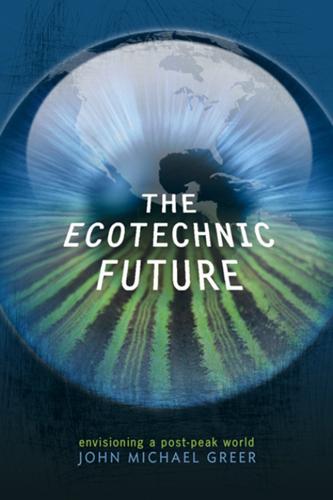
The Ecotechnic Future: Envisioning a Post-Peak World
by
John Michael Greer
Published 30 Sep 2009
His argument is impeccable: as using the resource becomes more efficient, costs per unit go down, and so people can afford to use more of it; as efficiency goes up, it also becomes economically feasible to apply the energy resource to new uses, and so people have reason to use more of it. Jevons’ paradox has been used more than once to argue against conservation, on the grounds that using energy more efficiently will simply lower the cost of energy and encourage people to use more of it. This was quite true when the only thing constraining energy supply was price, but this is no longer the case; geological realities rather than market forces are placing hard limits on the upper end of petroleum production. Thus Jevons’ paradox becomes a counterweight to rising energy prices: as energy costs rise, conservation and energy efficiency measures become more profitable and the decrease in systems costs helps hold the price of energy in check. 171 172 T he E cotechnic F u t u re When energy supplies are limited, therefore, Jevons’ paradox is an argument for conservation, not against it.
…
In a world facing significant declines in the availability of energy, it’s therefore crucial to pay attention to system costs as well as production costs, keeping net energy as high as possible, so that systems necessary to community survival can be kept going more efficiently. This approach relies on the logic of Jevons’ paradox, which was first propounded by British economist William Stanley Jevons in his 1866 book The Coal Question. Jevons pointed out that when improvements in technology make it possible to use an energy resource more efficiently, getting more output from less input, the use of the resource tends to go up, not down.
…
Thus Jevons’ paradox becomes a counterweight to rising energy prices: as energy costs rise, conservation and energy efficiency measures become more profitable and the decrease in systems costs helps hold the price of energy in check. 171 172 T he E cotechnic F u t u re When energy supplies are limited, therefore, Jevons’ paradox is an argument for conservation, not against it. During the 1970s, people across the industrial world downshifted their lifestyles and used energy more efficiently with relatively simple cost-effective measures. As a direct result, energy use dropped sharply — between 1978 and 1985, for example, world petroleum consumption went down by 15 percent. The measures that caused that sharp decrease cost much less than it would have cost to produce 15 percent more petroleum and could readily have been pushed further if the industrial world had not chosen instead to cash in the resulting gains and spend them on one final energy binge.
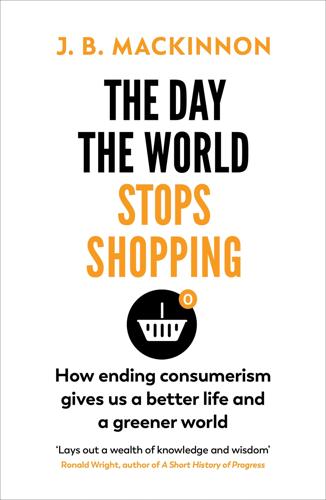
The Day the World Stops Shopping
by
J. B. MacKinnon
Published 14 May 2021
The reason people were using more electricity, Inoue and Matsumoto concluded, is that when Japanese consumers saw that the Top Runner appliances saved them money, they chose to spend that money on more and bigger appliances. People were adding a second or third television or air conditioner to their homes, and upgrading to the largest refrigerators on the market. “The effectiveness of green consumption,” wrote Inoue and Matsumoto, “is lost.” The two researchers compared what they observed to the “Jevons paradox,” named for William Stanley Jevons, an economist who studied why the use of coal in nineteenth-century Britain was rising at a rate that threatened to deplete the supply and cast the nation into a dark age. In 1865, Jevons drew a counterintuitive conclusion: as people found new ways to burn coal more efficiently, they were using more coal.
…
“In every kind of enterprise we shall no doubt meet a natural limit of convenience.” A century and a half later, global consumption of nearly everything continues to increase—including coal, though demand may be flattening at last. Stopping shopping appears to finally offer an escape from the Jevons paradox. If, in a deconsuming world, we invent a television that is three times more energy efficient, then we will not use the money we save to shop for extra televisions, each one bigger than the less efficient one we used to have. Instead, the gain in efficiency actually pays off: we end up with the same number of TVs, but use up less energy watching them.
…
Instead, the gain in efficiency actually pays off: we end up with the same number of TVs, but use up less energy watching them. Except that, said David Font Vivanco, an environmental scientist based in Barcelona, money remains a trickster. Font Vivanco studies “rebound effects,” which are the often unforeseen consequences that arise from changes in technology and social behavior. The Jevons paradox and Japan’s Top Runner program involved rebound effects linked to advances in energy efficiency. But buying less stuff, period, has rebound effects of its own. “The way I like to think about it is rather simple,” Font Vivanco told me. “If you have some economic savings, then you’re going to spend them.
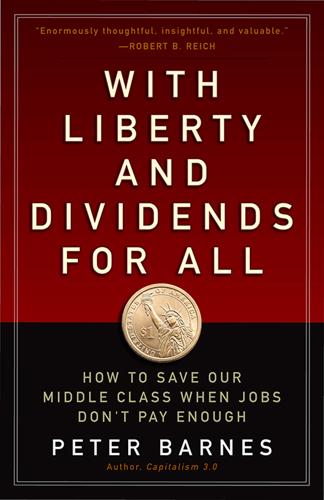
With Liberty and Dividends for All: How to Save Our Middle Class When Jobs Don't Pay Enough
by
Peter Barnes
Published 31 Jul 2014
Given Congress’s present inability to do anything sensible on taxes or climate change, it seems unwise to bet the planet on Congress’s being sensible on both issues multiple times. There’s one other problem with relying on price alone to reduce total carbon use. The oil-price shock of 1973 prodded America to improve energy efficiency but not to reduce energy consumption. This was a demonstration of the so-called Jevons Paradox, first noticed by British economist William Stanley Jevons in 1865. Jevons observed that improvements in the efficiency of coal use led to greater consumption of coal in a wide range of industries, an increase that more than offset the savings from efficiency. In the twenty-first century, it’s quite possible that more people using fossil fuels more efficiently for more purposes (such as the Internet) could still increase total use, or at least dampen the rate at which usage declines.
…
See Taxation Incremental possible, 121 India and HFC-23, 105 Industrialization, 16 Inequality, spiral of, 32–33 Inflation and debt-free money distribution, 91 Innovation, 25–26 Insourcing, 26–27 Intel, 25–26 Intellectual property rights dividends from, 144 protection of, 94 Internalizing externalities, 63 Internet, 128–129, 145–146 Investment banks, 54–55 Iraq, 130 J Japan and money distribution, 92 Jevons, William Stanley, 116 Jevons Paradox, 116 Jobs, 22–24. See also Labor unions; Unemployment top ten growth in, 23 work hours, decreasing, 95 Job training, 21, 25 Just Give Money to the Poor, 131 K Kauffman, Stuart, 120 Kay, John, 53 Kelso, Louis, 81–82 Kerry, John, 110 Keynes, John Maynard, 56, 135–136 Keystone pipeline, 135 Kyoto Protocol, 99–100, 104–105 L Labor unions, 131 build-and-join movements and, 131–132 and cap-and-trade system, 131–132 deunionization, 18–19 Landrieu, Mary, 130 Lanier, Jaron, 128–129 Lemann, Nicholas, 134 Lieberman, Joe, 100 Liquidity premium, 48, 54 Long, Huey, 134 M Madison, James, 15 Market economies, 30–32 Markey, Edward, 97, 108 Marx, Karl, 51 McCain, John, 100 McGovern, George, 80 McKibben, Bill, 110, 134 Meadows, Donella, 29 Means testing, 41 Medicare, 19 drug prices and, 54 individual/employer contributions to, 84 privatization of, 21 voucher system and, 39 Mexico, 26, 131 Microsoft, 48–49 Middle class, 10–11, 16–17 descent of, 19–20 mass middle class, 15–16 nonlabor income and, 27–28 Minerals, rent from, 145 Money.
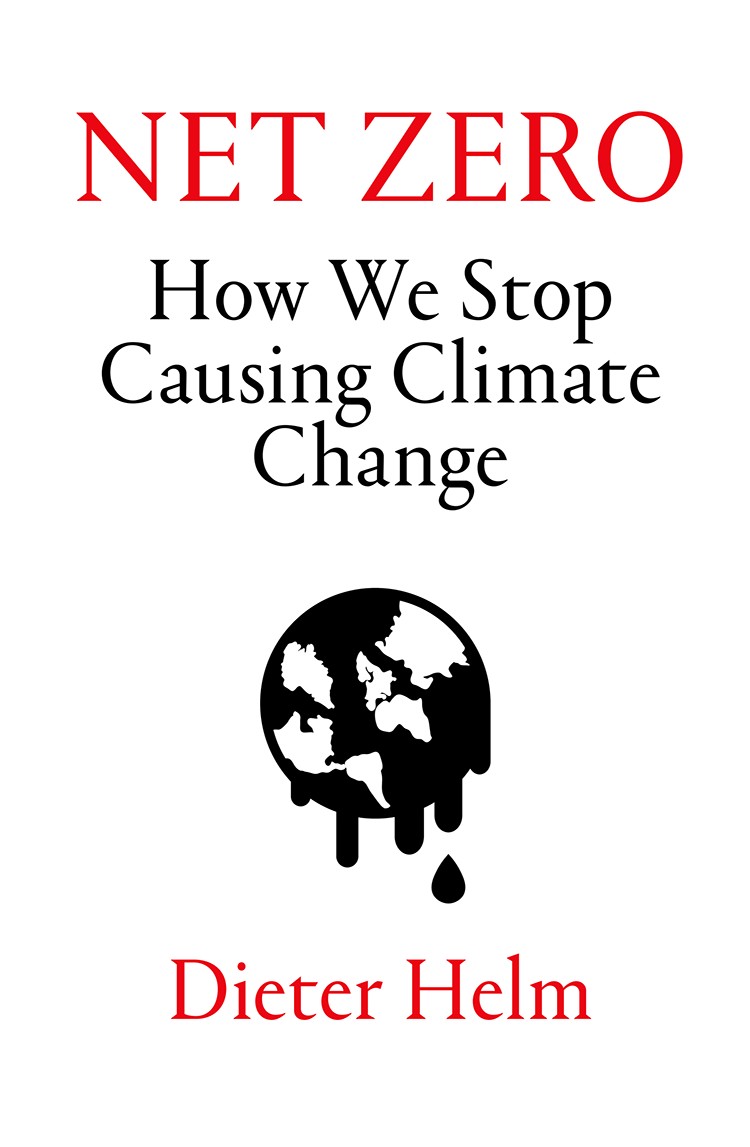
Net Zero: How We Stop Causing Climate Change
by
Dieter Helm
Published 2 Sep 2020
The energy efficiency lobby likes to paint a picture of state-of-the-art housing, the sort that wealthy people can afford. It neglects to focus on the run-of-the-mill housing. It is indeed remarkable that even in the midst of a UK house-building boom, almost all of them are not remotely close to net zero. Finally, remember the Jevons Paradox discussed in chapter 6 (see endnote 8). Suppose the energy efficiency measures reduce your energy costs. You would have more money to spend on energy. That indeed is what has happened over the last century: as energy efficiency has improved, so the demand for energy has gone up rather than down.
…
Back to text 6. Helm, D. ‘HS2: a conclusion in search of a rationale’, September 2019, www.dieterhelm.co.uk/regulation/transport/hs2-a-conclusion-in-search-of-a-rationale/. Back to text 7. See the Airports Commission, ‘Airports Commission: Final Report’, July 2015. Back to text 8. This is known as the Jevons Paradox after the nineteenth-century English economist William Stanley Jevons, referred to in chapter 1: more efficiency leads to higher, not lower, demand, as it has for the last 200 years since those early very inefficient steam engines were used to pump water from coal mines. Back to text 9. One proposal is Desertec, which failed, but nevertheless identified the ambitious opportunity which might be subsequently pursued.
…
acid rain 25, 194 Africa xiv, xv, 2, 25, 30, 38, 44, 45, 47, 48, 51, 137, 229 agriculture 2, 6, 12, 13, 14, 23, 35–6, 43, 44–5, 70, 76, 86, 87–8, 95, 100, 102, 109, 116, 146–7, 149, 159, 163–80, 181, 183, 192, 197, 198, 206, 220 baseline, the 164–8 biodiversity loss and 2, 5, 100, 164, 165, 168, 169, 171, 172, 174, 180 biofuels and 197–8 carbon emissions and 2, 12, 13, 35–6, 76–7, 146–7, 163–80 carbon price and 167–70, 171, 172, 173, 180 China and 28–9, 35, 45, 180 economics of 76, 165, 166–7, 171, 174 electricity and 13, 166, 168, 174, 178, 180 fertiliser use see fertiliser lobby 14, 110, 164, 165, 169, 170, 197 methane emissions 23, 84, 177, 178, 179 net gain and 172–4 net value of UK 76, 166 new technologies/indoor farming 87–8, 174–9, 180, 213 peat bogs and 2, 179 pesticide use see pesticides petrochemicals and 166 polluter-pays principle and 76, 168–70, 172, 173 pollution 36, 86, 163, 165–6, 168–70, 172, 173, 177–8, 230 public goods, agricultural 170–4, 180 sequestering carbon and 12, 95, 163, 166, 168, 169, 170, 171, 172, 173–4, 177, 179, 180 soils and 2, 146, 163, 164, 165, 166, 168, 169, 171, 172, 175, 179 subsidies 14, 76, 102, 109, 116, 164, 165, 166, 167, 169, 170, 172, 180, 228 25 Year Plan and 179–80 Agriculture Bill (2018), UK 170 air conditioning 135–6, 224, 233 air quality xiii, 13, 25, 46, 52, 61, 70, 135, 153, 177, 180, 201, 216, 230, 232 air transport 3–4, 6, 11, 13, 22, 50, 53, 73, 87, 88, 92, 107, 125, 128, 129, 132, 133, 134, 149, 156–7, 186, 195, 201, 203–5 aluminium 7, 117 Amazon rainforest 2, 34, 35, 95, 145, 149–50, 151, 155, 229, 230 ammonia 35, 137, 191 anaerobic digesters 35, 165, 230 animal welfare 167, 177 antibiotics 93, 165, 174 Arctic 26, 46, 114, 178 artificial intelligence (AI) 32, 175, 220, 231 autonomous vehicles 13, 129, 132, 175, 189–90, 231 Balkans 137–8 Bank of England 121 batteries 6, 31, 131, 135, 141, 183, 184, 185–90, 191, 199, 204, 213, 214, 219, 220, 221, 225, 231 beef 5, 95, 116, 117, 167, 230 Berlin, Isaiah 104 big 5 polluter products 117–18, 120 bin Salman, Mohammad 27 biocrops 36 biodiversity xiv, 2, 5, 12, 13, 28, 35, 51, 76, 94, 100, 148, 149, 152, 153, 158, 159, 164, 165, 168, 169–70, 171, 172, 174, 180, 227, 233 bioenergy 31, 34–5, 36 biofuels 21, 35, 49, 50, 67, 70, 95, 135, 183, 184, 197–8, 210, 230 biomass 32, 34, 49, 50, 67, 69, 109, 146, 147, 151, 210, 217 bonds, government 220 BP 27, 149, 187, 199 Deepwater Horizon disaster, Gulf of Mexico (2010) 147 Brazil 2, 35, 38, 44–5, 47, 95, 145, 149–50, 155, 198 Brexit 42, 47, 56, 117, 165 British Gas 102, 139 British Steel x, 194 broadband networks 6, 11, 90, 92, 125, 126, 127–8, 130–1, 132–3, 135, 140–1, 199, 201, 202, 205, 211, 214, 231, 232 Brundtland Commission 45 BT 127–8, 141 Openreach 214 Burn Out (Helm) ix, xiv Bush, George W. 36, 48, 53, 103 business rates 76, 165 Canada 52, 191, 193 capitalist model 26, 42, 99, 227 carbon border tax/carbon border adjustment xii, 11, 13, 60, 80, 115–20, 194–6, 204 carbon capture and storage (CCS) xiv, 12, 75–6, 95, 109, 146, 147–8, 149, 154, 159, 203–4, 207, 209, 222, 223 Carbon Crunch, The (Helm) ix, xiv, 221 carbon diary 4–5, 8, 10, 11, 64–6, 83, 86, 116, 143, 144, 155, 156, 167, 180, 181, 185, 203, 205 carbon emissions: agriculture and see agriculture by country (2015) 30 during ice ages and warm periods for the past 800,000 years 21 economy and 81–159 electricity and see electricity global annual mean concentration of CO2 (ppm) 19 global average long-term concentration of CO2 (ppm) 20 measuring 43–6 since 1990 1–14, 17–37 transport and see individual method of transport 2020, position in 36–7 UN treaties and 38–57 unilateralism and 58–80 see also unilateralism carbon offsetting xiii–xiv, 4, 5, 12, 34, 45, 72, 74, 79, 94–6, 97, 105, 143–59, 192, 201, 203, 207, 214, 222, 223, 234 for companies 148–50 for countries 151–5 for individuals 155–7 markets 71–2, 110–13, 117, 144, 157–9, 208 travel and 156, 201–3 see also sequestration carbon permits 71–2, 79, 110–13, 117, 144, 208 carbon price/tax xii, xiii, xv, 8, 11, 12, 13, 26, 60, 61, 71, 72, 77, 79, 80, 84, 85–6, 102–3, 105, 106–24, 134, 143, 146, 147, 150, 151–4, 157, 159, 192, 197, 198, 199, 203, 227–30, 232, 234 agriculture and 167, 168, 169–70, 171, 173, 180 domain of the tax/carbon border adjustment xii, 11, 13, 60, 80, 115–20, 121, 124, 192, 194–6, 197, 204, 227 electric pollution and 216–18 ethics of 107–10 floor price 115, 117, 208 for imports 11, 13 prices or quantities/EU ETS versus carbon taxes 110–13 setting 113–15 transport and 192–9 what to do with the money 121–4 where to levy the tax 119–20 who fixes the price 120–1 carbon sinks 2, 5, 166, 169, 203 carboniferous age 34 cars 1, 3, 4, 7, 20, 22, 36, 44, 70, 73, 114, 129, 181, 182, 183, 184–5, 190, 191, 193, 196, 197, 198, 199 see also electric vehicles cartels 39, 40, 43, 45, 46, 47, 56 cattle farming 35, 36, 95, 150, 166, 167, 173, 177, 198 Central Electricity Generating Board (CEGB) 102, 139, 218 cement 6, 7, 26, 29, 34, 87, 117, 171 charging networks, electric vehicle 91, 129–30, 141–2, 184, 185–90, 199, 200, 202, 219 Chernobyl 78 China xi, xv, 1–2, 5, 8, 18, 42, 46, 47, 48, 64, 66, 74, 101, 180, 229 Belt and Road Initiative 28, 45 coal use 1–2, 8, 23–4, 24, 28, 31, 38, 117, 154, 206, 208 Communist Party 2, 27, 42, 46 demand for fossil fuels/carbon emissions 1–2, 8, 18, 20, 22, 23–4, 24, 25, 27–31, 36, 38, 51, 73, 117, 154, 206, 208 export market x–xi, 5, 9, 64, 66, 117, 155, 194 fertiliser use 35 GDP xv, 27, 29 nationalism and 42 petrochemical demand 22 renewables companies 9, 32, 73, 74, 77, 79 Tiananmen Square 42 unilateralism and 58, 59 UN treaties and 46, 47, 48, 53, 54, 55, 58, 59 US trade war 56, 118 Churchill, Winston 183 citizen assemblies 99–101 climate change: carbon emissions and see carbon emissions 1.5° target 38, 57 2° target 1, 10, 22–3, 28, 30, 38, 39, 45, 47, 54, 55, 57, 108, 122, 155, 206 see also individual area of climate change Climate Change Act (2008) 66, 74–7 Clinton, Bill 40, 48 Club of Rome 98 coal 1–2, 5, 8, 13, 20, 23–5, 28, 29, 30, 31, 32, 34, 36, 38, 50, 52, 53, 60–1, 67, 72, 77, 78–9, 101, 109, 112, 116, 117, 119, 134, 136, 145, 147, 148, 151, 154, 155, 182, 183, 194, 196, 206–9, 210, 212, 214, 216, 217, 218, 229, 230 coastal marshes 146, 159 colonialism 45 Committee on Climate Change (CCC), UK x–xi, 7, 74–5, 120, 164, 166, 169, 217, 235 ‘Net Zero: The UK’s Contribution to Stopping Global Warming’ report x–xi conference/video calls 6, 129, 156, 202, 205 Conference of the Parties (COP) xii, 10, 48, 50, 53–4, 55, 59, 205 congestion charges 198 Copenhagen Accord 48, 53–4, 59 Coronavirus see Covid-19 cost-benefit analysis (CBA) 71, 108, 110, 114, 138 cost of living 116 Covid-19 x, xi–xii, 1, 3, 6, 9, 18, 19, 22, 25, 27, 30, 37, 44, 46, 50, 57, 65, 69, 80, 89, 93, 129, 135, 148, 171, 201, 202, 204, 232 CRISPR 176 crop yields 172, 177 dams 2, 36, 52–3, 179 DDT (Dichlorodiphenyltrichloroethane) 100 deforestation 2, 5, 34, 35, 36, 38, 43, 44, 47, 55, 87, 95, 145, 146, 149–50, 155, 172–3, 179, 197–8, 229 Defra (Department for Environment, Food and Rural Affairs) 170 deindustrialisation x, 29, 46, 52, 54, 59, 72–4, 218 Deng Xiaoping 27 Denmark 69–70, 136–7 desalination 135–6, 179 diesel 4, 20–1, 70, 76, 86, 109, 119, 121, 129, 132, 164, 165, 166, 174, 175, 178, 179, 181, 182, 185, 186, 191, 192, 196–7, 208, 217, 230 ‘dieselgate’ scandal 196–7 digitalisation 1, 8, 11, 13, 33, 92, 117, 136, 174, 175, 180, 206, 211, 215, 221, 228–9, 231 DONG 69 Drax 147, 151, 154, 218 economy, net zero 10–12, 81–159 delivering a 96–103 intergenerational equity and 96–7 markets and 103–5 net environmental gain see net environmental gain political ideologies and 98–101 polluter-pays principle see polluter-pays principle public goods, provision of see public goods, provision of technological change and 98 EDF 139, 218 Ehrlich, Paul 98 electricity 1–2, 4, 6, 11, 12, 13, 23, 31, 32, 49, 53, 61, 65, 66, 68, 70, 73, 77, 78, 79, 91, 92, 101, 102, 109, 117, 125, 127, 128, 129–30, 131–2, 134, 135, 136, 137, 139, 140, 141, 149, 158, 166, 168, 174, 178, 180, 182, 183, 228, 229, 231, 232, 234, 235 coal, getting out of 206–7 electric pollution and the carbon price 216–18 electric vehicles 4, 6, 13, 20, 23, 49, 61, 91, 92, 94, 121, 125, 128, 129–30, 131–2, 134, 141, 183–92, 193, 194, 197, 200, 201, 202, 206, 219, 228 equivalent firm power auctions and system operators 210–16 future of 206–25 gas, how to get out of 207–9 infrastructure, electric 185–90, 218–20 low-carbon options post-coal and gas 209–10 net gain and our consumption 222–5 R&D and next-generation renewables 220–2 renewable see renewables Energy Market Reform (EMR) 219 equivalent firm power (EFP) 212–16, 217, 220 ethanol 35, 71, 95, 197 eucalyptus trees xiv, 152 European Commission 60, 71, 72, 112 European Union (EU) xiv, 2, 7, 8, 9, 37, 42, 44, 46, 47, 117, 137, 165, 166, 197; baseline of 1990 and 51–2 Common Agricultural Policy (CAP) 76, 165 competition regime and customs union 56 deindustrialisation and 46, 52, 54, 59, 72–4 directives for 2030 66 Emissions Trading System (EU ETS) 71–2, 73, 79, 110–13, 117, 144, 208 importing carbon emissions 59 Internal Energy Market (IEM) 68, 71 Kyoto and 9, 51, 59, 66–7 Mercosur Agreement 44, 95 net zero target for 2050 66, 115, 143, 155, 167, 180 Paris and 54 Renewable Energy Directive 68–71, 73, 109 2020 targets signed into law 66 2020–20–20 targets 67, 69, 74 unilateralism and 59, 66–71, 80 Eurostar 133 externalities 104, 170, 180, 196 Extinction Rebellion 6 farmers 14, 26, 35, 36, 43, 71, 76, 86, 95, 102, 109, 110, 146–7, 164, 165, 166, 169, 170, 174, 175, 196, 197, 198 fertiliser 4, 6, 7, 26, 29, 35, 61, 73, 86, 87, 116, 117, 119, 163, 165, 169, 174, 175, 178, 179, 191, 194, 197 fibre/broadband networks 6, 11, 90, 92, 125, 126, 127–8, 130–1, 132–3, 135, 140–1, 201, 202, 205, 211, 214, 231, 232 financial crisis (2007/8) 1, 19, 69 first-mover advantage 75 First Utility 199 flooding 13, 77, 149, 152, 153, 159, 170, 233 food miles 167 food security 170–1 food waste 178, 180, 231 Forestry Commission xiv Formula One 186, 196 fossil fuels, golden age of 20–5 see also individual fossil fuel France 46, 47, 52, 56, 73, 78, 101, 113, 130, 136, 138 free-rider problem 39–40, 43, 62–4, 106, 119 fuel duty 121, 195–6 fuel efficiency 197 fuel prices 26, 112–13, 209 fuel use declaration 195 Fukushima Daiichi nuclear disaster (2011) 52, 78 Fukuyama, Francis: The End of History and the Last Man 40–1 gardens 6, 43, 143, 156 gas, natural ix, 2, 5, 8, 20, 23, 24, 25, 26, 29, 31, 32, 36, 50, 52, 68, 69, 79, 102, 109, 117, 119, 129, 136, 137, 146, 147–8, 149, 183, 190, 193, 194, 207–9, 210, 211, 214, 216–17 G8 47 gene editing 172, 176, 231 general election (2019) 121 genetics 98, 172, 174–6, 231 geoengineering 177 geothermal power 137, 178 Germany 9, 30, 47, 52, 59, 60, 62, 66, 67, 69, 70, 71, 72, 73, 75, 77–80, 83, 91, 101, 112, 136, 137, 138, 144, 206, 208, 209 Energiewende (planned transition to a low-carbon, nuclear-free economy) 59, 69, 77–80, 112, 144, 208 Gilets Jaunes 101, 113 GMOs (genetically modified organisms) 176, 177 Great Northern Forest, Britain 151 Green and Prosperous Land (Helm) xiii, xiv, 165, 169, 234 greenbelt 173 greenhouse effect 17 green new deal 90, 102, 234 green parties/green votes 69, 77, 78 green QE (quantitative easing) 102–3 green walls 153, 231 greenwash 156 gross domestic product (GDP) xii, xv, 1, 25, 27, 29, 41, 57, 59, 73, 76, 83, 93, 98, 103, 133, 165, 207, 227, 229, 233 growth nodes 133 G7 47 G20 47 Haber-Bosch process 35, 163 Hamilton, Lewis 186 ‘hands-free’ fields 175 Harry, Prince 6 Heathrow 133, 134 hedgerow 76, 166, 167, 172 Helm Review (‘The Cost of Energy Review’) (2017) ix, 120, 141, 200, 210, 212, 215, 217, 220, 238 herbicide 163 home insulation 102 House of Lords 170 housing 101, 223–4 HS2 92, 125, 132–4, 138, 202 Hume, David 49 hydrogen 13, 49, 92, 125, 128, 135, 137, 183, 184, 190–2, 199, 200, 204, 206, 213, 228 hydro power 31, 35, 36, 50, 52–3, 70, 136, 137, 191 Iceland 137, 178 imports x–xi, xiii, 5, 8, 10, 11, 12, 13, 62, 68, 70, 117–18, 155, 167, 178, 173, 180, 196, 227 income effect 72, 111 income tax 121, 122, 232 India xiv, xv, 25, 30, 31, 38, 43, 44, 47, 48, 51, 54, 55, 57, 154, 229 individuals, net zero for 155–7 Indonesia 2, 35 indoor farming 87–8, 177–8, 180, 213 indoor pollutants 223, 232 Industrial Revolution 1, 18, 19, 25, 47, 116, 145 INEOS Grangemouth petrochemical plant xi information and communications technology (ICT) 117, 202, 231 infrastructures, low-carbon xiii, xiv, 11–12, 14, 28, 60, 62, 65, 66, 90, 91–4, 96, 105, 109, 123, 125–42, 143, 147, 151, 154, 159, 171, 184, 186, 187, 190, 199–200, 214, 218–20, 228, 230, 231–2, 234–5 centrality of infrastructure networks 128–30 electric 125–41, 218–20 making it happen 141–2 net zero national infrastructure plan 130–6 private markets and 125–8, 141–2 regional and global infrastructure plan 136–7 state intervention and 126, 127–8, 141–2 system operators and implementing the plans 138–41 inheritance tax 76, 165 insects 164, 177, 231 insulation 102, 224 Integrated Assessment Models 114 intellectual property (IP) 75 Intergovernmental Panel on Climate Change (IPCC) 17–18, 47, 55, 57, 108, 172 internal combustion engine 13, 22, 181–2, 183, 184, 200, 221, 228 Internal Energy Market (IEM) 68, 71, 138 International Energy Agency (IEA) 25, 207 International Monetary Fund (IMF) 51 internet banking 131, 213 internet-of-things 128, 175 Iran 27, 42, 113, 137 Iraq 56, 192 Ireland 43, 157 Italy 137, 182 Japan 27, 28, 30, 52, 73, 78, 101, 185 Jevons Paradox 224 Johnson, Boris 89–90 Kant, Immanuel 104 Keynes, John Maynard 89, 102, 103, 105 Kyoto Protocol (1997) xii, 2, 7, 9, 13, 17–18, 37, 38, 39, 40–1, 47–8, 49, 51, 52–3, 59, 66–7, 119 laissez-faire 104, 138, 188 land use 35, 61, 95, 172, 237 LED (light-emitting diode) lighting 87, 178, 179, 180, 213 liquefied natural gas (LNG) 136, 183 lithium-ion battery 185 lobbying 10, 14, 33, 69, 71, 109, 110, 111–12, 115, 121, 157, 169, 170, 187, 197, 209, 223, 227, 228 location-specific taxes 194 maize 35, 165, 197 Malaysia 2, 229 Malthus, Thomas 98 Mao, Chairman 27, 42 meat xi, 65, 164, 177, 180, 232 Mekong River 2, 28, 179, 229 Mercosur Agreement 44, 95 Merkel, Angela 78 methane 4, 23, 84, 177, 178, 179, 216 microplastics 22 miracle solution 49–50, 55, 209 mobile phone 5, 125, 185 National Farmers’ Union (NFU) 110, 164, 165, 169, 170, 171 National Grid 139, 141, 189, 200, 211, 214, 219 nationalisations 101–2, 126–7 nationalism 41, 43, 55, 56, 138 nationally determined contributions (NDCs) 54–5 natural capital xiii, 14, 33–6, 51, 85, 86, 88, 90, 94, 97, 154, 158, 168, 171, 173–4, 236 Nature Fund 123, 169, 234 net environmental gain principle xiii, xiv, 10, 12, 62, 84, 94–6, 105, 143–59, 169, 172–4, 192, 201–3, 222–5 agriculture and 169, 172–4 carbon offsetting and see carbon offsetting electricity and 222–5 principle of 94–6, 143–4 sequestration and see sequestration transport and 192, 201–3 Netherlands 138 Network Rail 214 net zero agriculture and see agriculture defined x–xv, 3–14 economy 10–12, 81–159 see also economy, net zero electricity and see electricity transport and see individual method of transport 2025 or 2030 target 89 2050 target x, xi, 5, 59, 66, 74, 75, 115, 120, 135, 143, 155, 167, 169, 180, 184, 216, 217, 222, 226, 230, 231, 232 unilateralism and see unilateralism NHS 65 non-excludable 91, 93, 126, 170 non-rivalry 91, 93, 126, 170 North Korea 42 North Sea oil/gas 9, 40, 75, 97, 102, 137, 139, 147, 148, 193 Norway 130, 137, 191 nuclear power 5, 9, 12, 18, 23, 52, 60, 73, 77–9, 109, 125, 128, 129, 136, 140, 178, 194, 199, 206, 207, 208, 209–10, 212, 214, 216, 218, 219, 222, 228 Obama, Barack 48, 53, 54, 59 oceans 2, 14, 22, 33, 85, 86, 88, 148, 163, 231 offsetting see carbon offsetting offshore wind power 31, 69, 75–6, 208, 212, 219, 221 Ofgem 220 oil ix, 2, 20, 22–3, 25, 26, 27, 31, 32, 33, 36, 39, 40, 50, 67, 69, 86, 97, 117, 119, 129, 136, 137, 146, 147, 148–9, 150–1, 152, 181–3, 184, 185, 187, 189, 190, 192–4, 196, 197, 199, 206, 209, 210, 216–17, 229 OPEC 39, 40, 193 Orbán, Viktor 41, 42 organic food 61, 87, 178 Ørsted 70 palm oil 2, 5, 6, 35, 36, 66, 71, 167, 173, 197–8, 230 pandemic see Covid-19 Paris Climate Change Agreement (2015) xii, 2, 10, 13, 18, 30, 37, 38, 39, 48, 49, 54–5, 56, 57, 58, 66, 80, 105, 106, 118, 119, 227 peat bogs xiv, 2, 13, 14, 33, 35, 36, 43, 109, 146, 169, 179 pesticides 4, 26, 61, 163, 165, 169, 174, 178, 231 petrochemicals xi, 7, 8, 20, 22–3, 29, 73, 80, 86, 117, 166, 182 petrol 4, 86, 119, 121, 129, 185, 186, 187, 191, 192, 199 photosynthesis 34, 197 plastics 1, 22, 28, 35, 43, 66, 86, 87, 119, 143, 166, 184, 231 polluter-pays principle xiii, xv, 84–90 agriculture and 76, 168–70, 172, 173 carbon price and see carbon price/tax generalised across all sources of pollution 86 identifying polluters that should pay 86 importance of 10–11, 13, 61, 62, 65 intergenerational balance and 96–7 net environmental gain and 94 sequestration and see sequestration, carbon sustainable economy and 96–7, 105, 106 transport and 192–5, 198–9 see also individual type of pollution population growth 93, 97, 177, 178, 179, 232 privatisation 127, 140, 218–19, 220 property developers 94 public goods, provision of xiii, 10, 11–12, 62, 75, 84, 90–4, 96, 104, 105, 109, 122, 123, 126, 128, 141, 147, 151, 153, 159, 164, 168, 173–4, 180, 192, 199–200, 202, 218, 229, 230 agricultural 170–4, 180 low-carbon infrastructures see infrastructures, low-carbon research and development (R&D) see research and development (R&D) Putin, Vladimir 27, 41, 42, 89 railways 11, 13, 13, 87, 91, 92, 94, 125, 128, 129, 130, 131, 132–3, 138, 139, 156, 182, 183, 187, 202, 212, 214, 232 rainforest 2, 5, 34, 35, 36, 38, 44, 47, 55, 87, 95, 145, 149, 155, 173, 179–80, 197, 229 rationalism 40–1 Reagan, Ronald 103 red diesel 76, 109, 164, 165, 196 regulated asset base (RAB) 127, 141, 215, 220 remote working 128, 156, 201–2, 205 renewables ix, 6, 8, 9–10, 18, 19, 21, 26, 31–5, 36, 49, 50, 55, 61, 67, 72, 77, 79, 85, 86, 109, 110, 112, 123, 125, 128, 131, 135, 138, 140, 144, 149, 178, 188, 191, 194, 197, 199, 207, 209–10, 211, 212, 213, 214, 215, 216, 217, 219, 220–2, 224, 228 Chinese domination of market 9, 32, 73, 74, 77, 79 cost-competitiveness of 9–10, 49, 51, 61, 68 failure of, 1990-now 19, 31–3, 36 modern global renewable energy consumption measured in TWh per year 32 miracle solution and 49–51 Renewable Energy Directive 68–71, 73, 109 subsidies ix, 9, 10, 50, 68–9, 71, 79, 80 see also individual renewable energy source Renewables UK 110 research and development (R&D) xiv, 12, 13, 14, 62, 65, 66, 90, 93–4, 104, 109, 123, 165, 172, 192, 200, 218, 220–2, 223, 228, 234 reshoring businesses 8, 204 rivers 2, 22, 28, 86, 128, 152, 165, 169, 179, 214, 230 roads 11, 28, 45, 91, 92, 125, 129, 131–2, 140, 165, 182, 189, 194, 198, 202, 232 robotics 32, 175, 204, 206, 231 Rosneft 26 Royal Navy 183 Russia 26, 27, 30, 40, 42, 44, 45, 46, 47, 48, 50, 52, 55, 56, 192, 193 RWE 139, 218 Ryanair 156–7 rye grass 35 salmon 169, 177 Saudi Arabia 26, 33, 40, 42, 50, 137, 192, 193 Saudi Aramco 26, 50 seashells 34 sequestration, carbon xi, xiv, 12, 61, 66, 85, 90, 95, 143–59, 228, 229, 231, 232 agriculture and 12, 163, 166, 168, 169, 170, 171, 172, 173, 176–7, 179, 180 baseline definition and 146–7 biofuels and 35, 146, 217 carbon capture and storage (CCS) xiv, 12, 75–6, 95, 109, 146, 147–8, 149, 154, 159, 203–4, 207, 209, 222, 223 companies, net zero for 148–51 countries, offsetting for 151–5 electricity and 222, 223 gas and 207 individuals, net zero for xi, xiv, 155–7 markets, offsetting 157–9 natural capital destruction and 2, 19, 33–6, 44, 45, 51 natural sequestration xi, xiii, 2, 7, 12, 14, 33–6, 37, 45, 52, 66, 85, 90, 94–6, 105, 143–59, 163, 168, 171, 173, 176–7, 179, 180, 203, 206, 207, 222, 223 net gain principle and 143–4, 146, 149–50 offsetting principle and 143–5 peat bogs and see peat bogs principle of xi, xiii, 2, 7, 12–13 soils and see soils transport and 185, 190, 203 tree planting and see trees, planting/sequestration and types of 145–8 wetlands/coastal marshes and 146, 159, 233 shale gas 8, 208 Shell 27, 149, 199 shipping 8, 13, 22, 28, 36, 49, 114, 125, 137, 181, 182–3, 191, 194–5, 203–5, 217 Siberia 2, 46 smart appliances 128, 129, 132 smart charging 11, 13, 128, 129, 130, 139, 214, 219 soils xiii, 2, 5, 7, 12, 14, 33, 35, 36, 43, 55, 76, 109, 146, 149, 152, 156, 159, 163, 164, 165, 166, 168, 169, 171, 172, 175, 179, 203, 228 solar panels/solar photovoltaics (PV) 5, 6, 9, 12, 13, 21, 31, 32, 33, 49, 53, 68, 69, 71, 74, 79, 87, 91, 135, 136, 137, 178, 179, 188, 204, 207, 208, 209, 210, 211, 213, 214, 216, 217, 221, 222, 223, 224–5 Sony 185 Soviet Union 18, 40, 52, 67–8, 89 soya 95 Spain 69, 130, 137 sport utility vehicles (SUVs) 106, 121, 192 spruce xiv, 152, 170 standard of living xv, 1, 5, 8, 10, 11, 14, 229, 233 staycations 201 steel x–xi, 6, 7, 8, 26, 28, 29, 53, 66, 73, 80, 87, 116, 117, 118, 119, 171, 184, 194–5 Stern, Nicholas: The Economics of Climate Change 41, 63 subsidies ix, 9, 10, 14, 32, 50, 51, 52, 53, 69, 71, 76, 79, 80, 89, 102, 109, 110, 113, 116, 123, 140, 154, 164, 165, 166, 167, 169, 170, 172, 180, 193, 196, 198, 209, 215, 221, 222, 228, 230 sugar cane 35, 71, 95, 197, 198 sulphur pollution 22, 25, 28, 78, 191, 194, 197, 230 sustainable economic growth xv, 10, 12, 14, 61, 83, 92, 94, 97, 98, 105, 227, 233 Taiwan 42 taxation xii, 11, 62, 71, 72, 76, 80, 87, 89, 90, 91, 92, 97, 101, 102, 103, 106–24, 126, 127, 130, 133, 147, 150, 151–2, 153–4, 157, 159, 165, 169, 170, 192–6, 197, 198, 199, 203, 232, 234 technological change 98, 127, 141, 174–5, 221 Thatcher, Margaret 17 Thompson, Emma 6 3D printing 175, 204 Thunberg, Greta 6, 205 tidal shocks 159 top-down treaty frameworks 13, 38–57, 80, 110, 119 tourism/holidays 6, 22, 36, 88, 94, 107, 114, 128, 156, 201, 204–5 transport, reinventing 181–205 aviation 195, 201, 203–5 see also air transport batteries and charging networks 185–90 biofuels 196–8 electric alternative 183–5 hydrogen and fuel cells 190–2 innovation, R&D and new infrastructures 199–200 internal combustion engine 181–2 net gain and offsets (reducing travel versus buying out your pollution) 201–3 oil 183–4 polluter pays/carbon tax 192–6 shipping 203–5 urban regulation and planning 198–9 vehicle standards 196–8 see also individual type of transport Treasury, UK 120–2 trees, planting/sequestration and xi, xiii, xiv, 2, 7, 13, 14, 33, 34, 45, 76, 85, 94–6, 146, 148, 149–51, 152–3, 155, 156, 157, 158, 159, 168, 169, 172, 179, 203, 231 trophy project syndrome 133 Trump, Donald 2, 8, 41, 42, 48, 89, 99, 103, 121 25 Year Environment Plan xiii, 153, 170, 179–80 UK 47, 69 agriculture and 164, 166, 167, 173 carbon emissions (2015) 30 carbon price and 115, 120 Climate Change Act (2008) 66, 74–7 coal, phasing out of 24–5, 60–1, 77, 208 Committee on Climate Change (CCC) x–xi, 7, 74–6, 120, 164, 166, 169, 217, 235 deindustrialisation and 72–4 80 per cent carbon reduction target by 2050 74 electricity and 206, 208, 218, 219, 224 Helm Review (‘The Cost of Energy Review’) (2017) ix, 120, 141, 200, 210, 212, 215, 217, 220, 238 infrastructure 125, 132–3, 134, 137, 139–40 net zero passed into law (2019) 66 sequestration and 145, 150, 153, 154, 155, 156 transport and 195–6, 197, 198 unilateralism and 58–9, 60–1, 65, 66, 69, 72–7, 80 unilateralism xi, 8, 10, 11, 25, 58–80, 83, 105, 106, 119, 125, 143, 144, 155, 164, 167, 197, 203, 227 in Europe 66–80 incentive problem and 58–60 morality and 62–6 no regrets exemplars and/showcase examples of how decarbonisation can be achieved 60–2 place for 80 way forward and 80, 83 United Nations xi, xii, 6, 10, 17, 37, 38, 118 carbon cartel, ambition to create a 39–40, 43, 45, 46–7, 56 climate treaty processes xi, 6, 10, 13, 17–18, 36, 37, 38–57, 59, 80, 110, 118, 119, 204–5 see also individual treaty name Framework Convention on Climate Change (UNFCCC) 17–18, 36, 38, 59 miracle solution and 50–1 origins and philosophy of 41 Security Council 46, 47, 57 United States 8, 74, 139, 206 agriculture in 175, 176, 197 carbon emissions 8, 29, 30 China and 27–8, 42, 118 coal and 2, 24, 28, 29, 208 economic imperialism 45 energy independence 50 gas and 8, 20, 23, 24, 29, 50, 208 oil production 40, 50, 193 pollution since 1990 29 unilateralism and 58, 59, 74 UN climate treaty process and 38, 40–1, 44, 45, 46, 47, 48, 53, 54, 56 universal service obligations (USOs) 92, 126, 131, 202 utilitarianism 41, 63–4, 108, 110 VAT 117, 119–20, 121, 122, 232 Vesta 69 Volkswagen 196–7 water companies 76, 214, 230 water pollution/quality xiv, 12, 22, 61, 76, 152, 153, 165, 169, 170, 171, 172, 175, 177, 178, 179, 180, 232 Wen Jiabao 53, 59 wetlands 159, 233 wildflower meadow 164, 184 wind power 5, 9, 12, 21, 31, 32, 33, 49, 53, 68, 69–70, 71, 74, 75, 76, 78, 79, 91, 135, 136, 137, 138, 139, 178, 188, 191, 207, 208, 209, 210, 211, 212, 213, 214–15, 216, 217, 219, 221, 222 wood pellets 67, 217, 230 Woodland Trust 156, 158 World Bank 51 World Trade Organization (WTO) 52, 56, 118 World War I 183 World War II (1939–45) 78, 90, 92, 101, 106, 171 Xi Jinping 27, 41, 42 ACKNOWLEDGEMENTS So much is now discussed, written and published about climate change that it is impossible to keep track of all the ideas and conversations that have influenced my understanding of the subject.
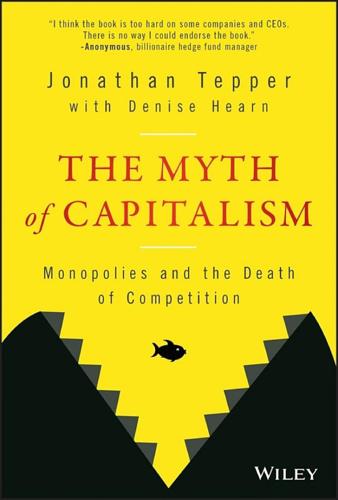
The Myth of Capitalism: Monopolies and the Death of Competition
by
Jonathan Tepper
Published 20 Nov 2018
Jevons concluded, in italics, “It is wholly a confusion of ideas to suppose that the economical use of fuel is equivalent to a diminished consumption. The very contrary is the truth.”36 What was true for each individual steam engine was not true for the whole of England. This insight is known as Jevon's Paradox: make something more efficient, and people will use more, not less of it. Jevons Paradox is the reason why expanding freeways in Los Angeles, Houston, and other concrete jungles only leads to more cars, less carpooling, and worse traffic. When people can drive more easily, they can live further away. Suddenly, much larger, more affordable homes are in commuting distance from cities.
…
Heinz Company, 3G/Buffett purchase, 3–4 Hoffer, ERic, 230 Horizontal shareholding, 209 disallowance, 246–247 problems, 200 Hospitals, mergers (impact), 43, 129 Housing costs, increase, 114 Hull, Cordell, 150 Hurricane Maria, impact, 60 Huxley, Aldous, 113 I IG Farben dissolution, 148 economic power, 147 “marriage,” 149 Immelt, Jeffrey, 211 Income distribution, union membership (contrast), 79f inequality (United States), 214f, 215–217 Income inequality, 36 increase, 37–40 Industry consolidation, timeline, 162f Inequality causes, 217 concentrated industries, impact, 225–226 income inequality, 37–40, 214f, 225f increase (Gini coefficients), 220f Information superhighway, Google dominance, 108 Initial public offerings (IPOs), 107 collapse, 11f Innovation, monopoly power deterrence, 54 Innovator's Dilemma, The, (Christensen), 55 Instagram, Facebook acquisition, 91 Instant Articles (Facebook), 102 Intaler, market dominance, 130 Intellectual property exploitation, 173 protection, 69–70 Intel, market domination, 121 Interest rates, increase, 64 Internal equity, 206 International Monetary Fund (IMF), developed country analysis, 216 Internet giants, avoidance, 247–248 platforms, common carriage rules (creation), 245 Intuit, market dominance, 125–126 Investment gap, 57–58 profitability, contrast, 57f reduction, 56–57 Invisible hand (Smith), 38 iPhone, Silicon Valley metaphor, 114 Ireland-Smith, Renee, 61 Irish Potato Famine, 59 IRS Restructuring and Reform Act, 126 J Jackson, Thomas Penfield, 94 Jefferson, Thomas, 50 Jeffreys, Diarmuid, 147 Jelinek, Craig, 77 Jevons' Paradox, 18 Jevons, William Stanley, 18 Job Creation and Destruction (Haltiwanger), 50 Jobs creation, 50, 74–75 reduction, 45–47 Jobs, Steve, 67–68 John D. Rockefeller (Nevins), 156 Josephson, Matthew, 139 JPMorgan Chase, 182 market dominance, 127 Juvenal, 87 K Kalecki, Michał, 6 Katz, Lawrence, 74 Keillor, Garrison, 17, 206 Keynes, John Maynard, 16–17, 154 Khan, Lina, 39, 103–104, 225 Kidney dialysis, duopolies, 124 Kill zone, 109 King Kong, monopolies (comparison), 35 King, Mervyn, 18 Knepper, Lisa, 83 Knoer, Scott, 170 Kodak, digital photography, 55 Kosnett, Michael, 169 Koss Corp., Chapter 11 reorganization, 170 Kraft Foods, H.J.
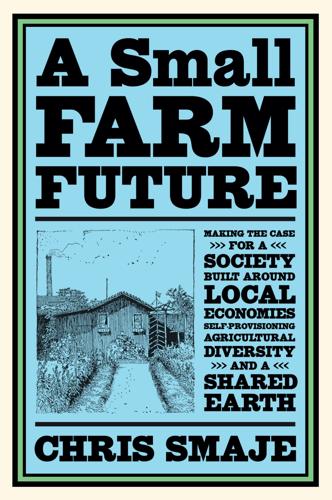
A Small Farm Future: Making the Case for a Society Built Around Local Economies, Self-Provisioning, Agricultural Diversity and a Shared Earth
by
Chris Smaje
Published 14 Aug 2020
The issue remains controversial, especially in view of the poor correlation between price and abundance, but recent evidence of increasing metal prices and price volatilities, decreasing ore quality, and a tripling of the resources and materials required to generate a given quantity of some ores compared to a century ago suggests that Ehrlich’s view might be sound.60 Besides, the problem modern civilisation faces isn’t just finding substitutes for a few resource inputs but for many, at a time when demand is growing and pollution sinks are shrinking. And consider rebound effects or the Jevons paradox: increased efficiency in resource use, which potentially delays its exhaustion, is counterbalanced by greater usage due to lowered price. (Evidence in this area is complex, but often suggests strong rebounds.61) So, to put it mildly, Simon’s case against resource scarcity seems unproven. Others put the matter less mildly, including chemical engineer Harald Sverdrup and his colleagues: Several metals, elements and energy resources are about to run into scarcity within the next decades, and most elements within some centuries.… [T]his scarcity will lead to ‘peak wealth,’ ‘peak population,’ ‘peak costs,’ ‘peak junk,’ ‘peak problems’ and possibly ‘peak civilization,’ unless some urgent measures are systematically taken throughout the world.… The future resource supply is thus unsustainable as long as resource use continues as today.… [G]overnments must take this issue seriously and immediately start preparing for legislations that can close material cycles, optimize energy use and minimize all types of irreversible material losses as soon as possible.62 Yet governments are stuck with a single model of development that makes it hard for them to do so.
…
In other words, higher-yielding land-sparing strategies might actually point to small-scale agriculture. Second, the land-sparing framework typically assumes that total production is fixed, so if per acre yields increase then land-take is bound to fall. This is rarely what happens in practice. There can be a Jevons paradox in land use, as with any kind of consumption. For example, improved yields in staple crops for which demand is relatively fixed can make land available for cash crops like biofuels, coffee, and meat for which demand is elastic, prompting increased land-take. Generally, greater market linkage can increase land-take, even when per acre yields are higher.
…
Nature. https://doi.org/10.1038/nature13809. Ploeg, Jan Douwe van der. 2008. The New Peasantries: Struggles for Autonomy and Sustainability in an Era of Empire and Globalization. London: Earthscan. _______. 2013. Peasants and the Art of Farming: A Chayanovian Manifesto. Halifax: Fernwood. Polimeni, John, et al. 2008. The Jevons Paradox and the Myth of Resource Efficiency Improvements. London: Routledge. Ponisio, Lauren, et al. 2014. ‘Diversification Practices Reduce Organic to Conventional Yield Gap,’ Proceedings of the Royal Society B 282:20141396. Poore, J., and T. Nemecek. 2018. ‘Reducing Food’s Environmental Impacts Through Producers and Consumers,’ Science 360(6392): 987–92.
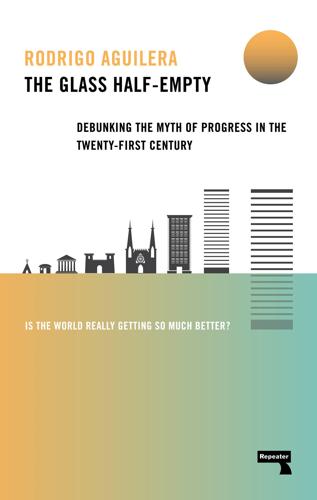
The Glass Half-Empty: Debunking the Myth of Progress in the Twenty-First Century
by
Rodrigo Aguilera
Published 10 Mar 2020
Unfortunately, the complete mismatch of where global capitalism’s trillions of investable wealth ends up (unproductive but lucrative housing markets, risky third-world corporate debt, safe first-world public debt, or simply stashed away in tropical island tax havens) and where it should (clean energy, green infrastructure, social investments) is possibly the most serious indication of how modern capitalism is unfit for the challenge of climate change, or any challenge that requires prioritizing environmental and social needs rather than treating them as consequential to interest rates being in equilibrium with the profit motive of each individual firm. But even in the event that the invisible hand guided private capital towards climate mitigating investment, this comes up against yet another well-known quandary in environmental economics: the Jevons Paradox. Named after a mid-nineteenth-century English economist, William Stanley Jevons, the paradox is one that appears to be endemic to resource markets; the tendency for efficiency gains in any industry to result in increased demand. This eventually leads to greater rates of consumption which offset the initial efficiency gain.
…
Jevons noticed this in the coal industry, which at the time was undergoing considerable technological change, but it has also been observed in most energy and transportation markets, among others.7 No better current example exists than the stratospheric rise in demand for air travel in recent decades that has completely swamped efficiency gains in aircraft (a fact that our environment-conscious but travel-obsessed society should take note of).8 The implications of the Jevons Paradox are significant, and go a long way towards explaining why technology alone is not the solution to the climate crisis. Demand matters. The spread of these technologies into developing countries also ends up with them becoming more energy intense than Western countries were at similar levels of development.
…
, Finance and Development, 53(2), Jun. 2016, https://www.imf.org/external/pubs/ft/fandd/2016/06/ostry.htm 59 Harvey, D., “Neoliberalism as Creative Destruction”, The Annals of the American Academy of Political and Social Science, 610, Mar. 2007, https://doi.org/10.1177/0002716206296780 60 Biebricher, T., “Neoliberalism and Democracy”, Constellations, 22(2), 2015, https://doi.org/10.1111/1467-8675.12157 61 “Statement of Aims”, The Mont Pelerin Society, https://www.montpelerin.org/statement-of-aims/ Epilogue: Winds of Change 1 “Matt Ridley - Stories for Change”, OpenLearn, 13 Nov. 2015, https://www.open.edu/openlearn/nature-environment/the-environment/creative-climate/stories-change/matt-ridley-stories-change 2 Global Warming of 1.5 °C (Intergovernmental Panel on Climate Change, 2018), Ch. 1, https://www.ipcc.ch/sr15/ 3 Pinker, S., Enlightenment Now, pg. 7 4 Scripps CO2 program, https://scripps.ucsd.edu/programs/keelingcurve/permissions-and-data-sources/ http://scrippsco2.ucsd.edu/data/atmospheric_co2/icecore_merged_products 5 Bernanke, B., “The Global Saving Glut and the U.S. Current Account Deficit”, The Federal Reserve Board, 10 Mar. 2005, https://www.federalreserve.gov/boarddocs/speeches/2005/200503102/default.htm 6 Most of Lawrence Summer’s writing on the topic can be accessed at: http://larrysummers.com/category/secular-stagnation/ 7 Alcott, B., “Jevons’ paradox”, Ecological Economics, 50(1), Jul. 2005, https://doi.org/10.1016/j.ecolecon.2005.03.020 8 Peeters, P. et al., “Are technology myths stalling aviation climate policy?” Transportation Research Part D, 44, May 2016, https://doi.org/10.1016/j.trd.2016.02.004 9 “Millennium Development Goals Indicators”, United Nations, http://mdgs.un.org/unsd/mdg/SeriesDetail.aspx?
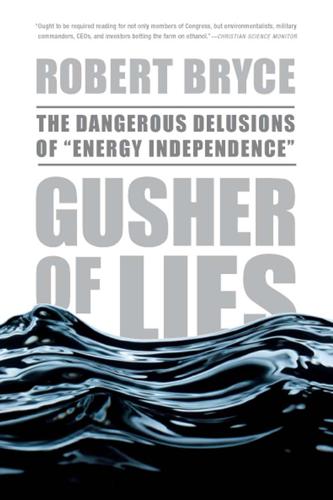
Gusher of Lies: The Dangerous Delusions of Energy Independence
by
Robert Bryce
Published 16 Mar 2011
After studying coal consumption patterns in Britain and assuming (wrongly) that his country’s coal deposits would soon be exhausted, Jevons concluded, “It is wholly a The Impossibility of Independence 143 confusion of ideas to suppose that the economical use of fuels is equivalent to a diminished consumption. The very contrary is the truth.”17 This observation has since come to be known as the Jevons paradox.18 In 2003, Vaclav Smil published a magnificent book, Energy at the Crossroads, that provides readers with a comprehensive understanding of the history of energy consumption, the problems in forecasting energy use, and the challenges facing any transition away from fossil fuels. When it comes to energy efficiency, Smil—like Huber, Mills, and Jevons—concluded that history is “replete with examples demonstrating that substantial gains in conversion (or material use) efficiencies stimulated increases of fuel and electricity (or additional material) use that were far higher than the savings brought by these innovations.”19 None of this is offered to imply that efficiency is bad.
…
Available: http://money.cnn.com/2007/02/26/autos/hybrid_sales. 14. Peter W. Huber and Mark P. Mills, The Bottomless Well, 109. 15. Ibid., 111–112. 16. Vaclav Smil, Energy at the Crossroads, 167. 17. Ibid., 332. 18. For more on this topic, see Wikipedia. Available: http://en.wikipedia.org/ wiki/Jevons_paradox. 344 Notes to Chapter 12 19. Smil, op. cit., 335. 20. Labonte and Makinen, op. cit. CHAPTER 12 1. Schmidt interview with the author, March 9, 2007, via telephone. 2. California Progress Report, “President Clinton: Why I Support Proposition 87 and Why the Oil Companies Are Wrong—The Complete Speech Delivered at UCLA,” October 14, 2006.
…
See also Oil companies International Research Center for Energy and Economic Development, 23–24 Internet, and electricity consumption, 133–136 Interstate Oil and Gas Compact Commission, 38 Iowa imperative, 156–158 Iran, 76 economic freedom in, 75 energy deals with, 247, 248–251 and energy imports, 8 influence of, 11 natural gas reserves in, 248 and 1953 coup, 97 nuclear development program in, 247, 251 oil exports in, 250 and oil price, 72–73 oil reserves in, 23 as terrorism sponsor, 60 U.S. attempts to isolate, 247–251 and U.S. oil imports, 55 See also OPEC Iran, shah of, 96–97, 105 Iran-Contra scandal, 120 Iranian revolution, 105 Iran-Iraq war, 23, 98–99 Iran-Libya Sanctions Act, 251 Iraq, 21–22, 23–28, 51, 72 and al-Qaeda, 31, 57 black market in, 25, 26 civil war in, 26–27 and oil control, 26 oil exports in, 23, 98 oil infrastructure in, 24, 26 and oil price collapse, 77 and U.S. oil imports, 55 as U.S. colonial possession, 77 See also First Iraq War; Iran-Iraq war; Second Iraq War Ireland, 57, 225–226 Islam, and terrorism, 58 Islamic fundamentalism, and Saudi Arabia, 56 Islamic parties, 74 Islamic world engagement with, 266, 288 Index 385 oil price collapse in, and reform of, 71–76 Isolationism, 9, 288, 289 Israel, 57 and bin Laden, 29 and Hezbollah, 55–56 U.S. military aid to, 96 Israeli-Palestinian issue, and oil infrastructure attacks, 32 Italy, and Iran, 250 Kunstler, James Howard, 35–36 Kuwait, 23, 51, 99–100, 102–103 economic freedom in, 74–75 oil exports in, 73 and oil price collapse, 79 reform in, 73 as U.S. ally, 54 See also OPEC Kyoto Protocol, 126, 270–272. See also Carbon dioxide emissions Jack No. 2, 39–40, 282 Jacobson, Mark Z., 186–187 Japan, 19, 21, 290 and carbon dioxide emissions, 271–272 and Iran, 250 oil reserves in, 68 Jebel Ali port, 54 Jefferson, Thomas, 1 Jevons, William Stanley, 142–143 Jevons paradox, 143 Johnson, Stephen L., 184 Jubail, Saudi Arabia, 237–240 Labonte, Marc, 143 Lanchester, John, 42 LaSorda, Tom, 193 Latin America, 167–168 Lay, Ken, 162 Leahy, Patrick, 245 Lebanon, 56 Lesar, David, 245 Libby, I. Lewis “Scooter,” 117 Libya, 251 Lieber, James B., 151–152 The Limits of Growth (Club of Rome), 37 Lind, William S., 56–57 Lindbergh, Charles, 278 Liquified natural gas (LNG), 200–201 Little Big Inch pipeline, 90 Live Earth: The Concerts for a Climate in Crisis, 42 London bus bombings, 57–58 The Long Emergency: Surviving the Converging Catastrophes of the Twenty-First Century (Kunstler), 35–36 López Obrador, Andrés Manuel, 78 Losman, Donald, 95 Love, John A., 95 Lovelock, James, 274 Lovins, Amory, 4, 138, 175 Luft, Gal, 28, 115, 119–120, 233 Kenedy Ranch, 228 Kennedy, Robert F., Jr., 227–228 Kennedy family, 227 Kermac 16, 39 Kerry, John, 176, 195 Khor al-Amaya, 30 Khosla, Vinod, 147, 168, 174 King, Gary, 244–245 King David Hotel bombing, 58–59 King Ranch, 228 Kissinger, Henry, 96 Klare, Michael, 34 Klein, Joel, 151 Koplow, Doug, 149 Kramer, Felix, 121 Kreider, Jan F., 166, 189–190 386 Index Lugar, Richard, 158, 159, 175 Lula da Silva, Luiz Inacio, 249–250 Maginot Line, 232 Makinen, Gail, 143 Maktoum, Mohammed bin Rashid al-, 73 Malaysia, 248 Mandela, Nelson, 59 Markey, Ed, 69, 70 Mauro, Garry, 103–104 Maxwell, Charley, 40–41 McCain, John, 5 and ethanol, 155–156 McFarlane, Robert C., 120 Media, and terrorism, 264 Mexico, 9, 53, 75 economic freedom in, 75 oil exports in, 78 and oil price collapse, 77–78 Microprocessors, 134, 135 fig. 6 Microsoft, 134 Middle East natural gas reserves in, 113 and oil price collapse, 79 refining capacity in, 81 refugee crisis in, 26–27 Mileage-based insurance policies, 276 Militarization of oil infrastructure, 33 of Persian Gulf, 96–100, 290 Mills, Mark, 133, 142 Mina al-Bakr, 30 Mineral imports, 16, 18, 293–297 Mineral rights, 75–76 Mining, 18 Montana, 65 Moore, Gordon, 44–45 Moore, Patrick, 274 Mortenson, Greg, 266 Mossadegh, Mohammad, 97 Motiva Enterprises, 61–62 MTBE (methyl tertiary-butyl ether), 181–182, 186 Mubarak, Hosni, 74 Mueller, John, 263–264 Muhanna, Ibrahim al-, 241–242 Mulally, Alan, 193 Muslim Brotherhood, 73, 74 Naimi, Ali al-, 50, 241 NASCAR Nation, 21 National Archives of Iraq, 24 National Commission on Energy Policy, 140 National debt, U.S., 289–290 National Iranian Gas Company, 247 National Iranian Oil Company, 247, 248 National Library of Iraq, 24 National Museum of Antiquities of Iraq, 24 National oil companies, 86–87, 105, 110, 113, 245.

The Ministry for the Future: A Novel
by
Kim Stanley Robinson
Published 5 Oct 2020
Also, crucially, even though they were creating more energy than ever before, they were burning far less CO2 into the atmosphere, less per year than in any year since 1887. So Jevons Paradox appeared to be foxed at last; not in its central point, which stated that as more energy was created, more got used; but now that it was being generated cleanly, and for fewer people as the population began to drop, it didn’t matter how much of it was being used. Since there was a surplus at most points of supply, most of the time, and created cleanly, they had simply outrun Jevons Paradox. And where excess energy was being lost by lack of completely effective storage methods, people were finding more ways to use it while they had it: for desalination, or more direct air carbon capture, or seawater pumped overland into certain dry basins, and so on.
…
Back home we found ourselves minor celebrities, and opportunities to tell our story would last forever. Some of us took that opportunity, others slipped back into comfortable anonymity. I myself decided to decompress in Tahiti. So, effect of this event on the real world: zero! So fuck you! 40 Jevons Paradox proposes that increases in efficiency in the use of a resource lead to an overall increase in the use of that resource, not a decrease. William Stanley Jevons, writing in 1865, was referring to the history of the use of coal; once the Watt engine was introduced, which greatly increased the efficiency of coal burning as energy creation, the use of coal grew far beyond the initial reduction in the amount needed for the activity that existed before the time of the improvement.
…
Of course efficiency as a measure has been constructed to describe outcomes considered in advance to be good, so it’s almost a tautology, but the two can still be destranded, as they are not quite the same. Examination of the historical record, and simple exercises in reductio ad absurdum like Jonathan Swift’s “A Modest Proposal,” should make it obvious that efficiency can become a bad thing for humans. Jevons Paradox applies here too, but economics has normally not been flexible enough to take on this obvious truth, and it is very common to see writing in economics refer to efficiency as good by definition, and inefficient as simply a synonym for bad or poorly done. But the evidence shows that there is good efficiency and bad efficiency, good inefficiency and bad inefficiency.

Fully Automated Luxury Communism
by
Aaron Bastani
Published 10 Jun 2019
‘The power of population is so superior to the power of the earth to produce subsistence for man that premature death must in some shape or other visit the human race.’ Malthus was far from unique in such reasoning. William Jevons, an English economist writing in the 1860s, noted how more efficient steam engines counter-intuitively meant more coal was consumed rather than less – an observation since referred to as the ‘Jevons Paradox’. Between Malthus and Jevons the verdict appeared to be the same: humanity’s ingenuity, as vast as it is, can never hope to keep pace with its voracious appetites. Yet the story of agriculture over the second half of the twentieth century tells us otherwise. While feeding a world of 9 billion might seem impossible, especially so within the broader context of the five crises, the most important achievement of the last sixty years suggests it can be done.
…
A., 225 HDV (Haringey Development Vehicle), 205 healthcare Britain and, 213–14 post-scarcity in, 138–58 in UK, 215–16 United States and, 213–14 Hegel, Georg Wilhelm Friedrich, 16 heme, 176–7 Henderson, Bruce, 46–7 Henderson Curve, 46–7 Hinkley Point C, 113 Hinton, Geoffrey, 91 history, in 2008, 20–1 Hobbes, Thomas, 139 Holt, William, 44–5 Horse Manure Crisis, 73, 134 Houdini 6, 81 Human Genome Project, 144–5, 146 human rights, centrality of, 193–4 hurricanes, 97–8 Huxley, Aldus, 19 IBM, 80 Ibn Khallikan, 40–2 IBRD (International Bank for Reconstruction and Development), 221 IDA (International Development Association), 221 IEA (International Energy Agency), 103, 105 ignorant people, 187–8 Illumina, 146 imitation, integration vs., 198 Impossible Foods, 175–7 India, 110, 166 Industrial Revolution, 33 industry, 32–6 inertia, measuring, 25–30 infectious diseases, 142–3 information about, 37–48 biology as, 39 food as, 164–8 Marx on, 49 post-capitalism and, 59–60 information goods, 63–5 information technology and robotics, 76 Institute for Global Prosperity at University College London, 214 integration, imitation vs., 198 internal energy insulation, 113 International Astronautical Congress, 119 International Bank for Energy Prosperity, 222 International Bank for Reconstruction and Development (IBRD), 221 International Development Association (IDA), 221 International Energy Agency (IEA), 100–1, 103, 105 International Renewable Energy Agency (IRENA), 103–4 International Rice Research Institute (IRRI), 166 internationalism, 197–200 internet bandwidth, 45–6 Interplanetary Transport System (ITS), 119, 120 IPCC, 101 IRENA (International Renewable Energy Agency), 103–4 IRRI (International Rice Research Institute), 166 Ishee, David, 9, 153–4 ITS (Interplanetary Transport System), 119, 120 Jain, Naveen, 127–8 Jameson, Fredric, 17n Japanese Space Agency, 131 JD.com, 89 Jennings, Ken, 80, 81 Jevons, William, 164, 167 Jevons Paradox, 164 Just Foods, 174, 178 Kalanick, Travis, 84 Kalecki, Michał, 230, 231 Kasparov, Garry, 80 Kennedy, Robert, 233 Keynes, John Maynard, 51, 56–9, 243 ‘KIVA’ robot, 89 Kodak, 40–2 Kranzberg, Melvin ‘Six Laws of Technology’, 237 Kuiper belt, 130 Kurdi, Alan, 156–7 Kuznets, Simon, 233 labour, when capital becomes, 69–71 Labour Party, 229 Łaski, Kazimierz From Marx to the Market, 230–1 LEDs, 242 Lehman Brothers, 21 Leia, 4–5 Lendlease, 205 Leninism, 196 Leontief, Wassily, 75–6 Letter on the Economic Possibilities of Our Grandchildren, 56–7 Lewicki, Chris, 132 Lewis, Clive, 207 life expectancy, 139–40, 142, 166 lithium, 117, 118 livestock farming, 169–70 ‘lost decade’, 26 Luther, Martin, 240–1 luxury populism electoralism and society, 194–6 against elite technocracy, 185–8 FALC and, 192–4 against globalism, 197–200 green politics and red politics, 188–92 towards internationalism, 197–200 Machiavelli, Niccolò Discorsi, 95 Madrid Protocol, 136 Malthus, Thomas, 167 An Essay on the Principle of Population, 163–4 market capitalism about, 197–8 emergence of, 39–40 market socialism, autonomy of publicly owned firms under, 231 Mars, 120 Martinelli, Luke, 226 Marx, Karl on capitalism, 16, 34–6, 35, 51, 54–5, 128, 199 The Communist Manifesto, 51–2 compared to Wycliffe, 241 Grundrisse, 51–2, 56–7, 61–3 on information, 49 on mode of production, 195 on production, 60 on technology, 237 May, Theresa, 29, 141, 206 McAfee, Andrew, 93 McCauley, Raymond, 146 McDonnell, John, 207 meat cultured, 170–5 synthetic, 168–70 from vegetables, 175–7 medicine, automation in, 91 meganucleases, 150 Memphis Meats, 172, 173 Mendel, Gregor, 149 migration, globalism and, 197 milk, cellular agriculture and, 177–9 Millennium Project, 87–8 minerals, 117–18, 134–7.

Smart Cities: Big Data, Civic Hackers, and the Quest for a New Utopia
by
Anthony M. Townsend
Published 29 Sep 2013
The initial effect of any widely adopted new technology that is more efficient at using a resource—say electricity—is to reduce the cost of that resource as demand falls. But by reducing the cost of a resource, we are spurred to consume more of it, often in other new applications for which it was previously too costly to use as an input. Urban planners have long been familiar with their own version of the rebound effect (or Jevons paradox as it is also known) in transportation planning. Building more roads never reduces traffic for long, but rather unleashes latent demand that was there all along. When congestion is reduced due to the new capacity, the opportunity cost of driving falls, spurring drivers who would never have ventured onto the previously clogged road to sally forth.
…
Cities Can Prepare for Atomic War,” Life, December 18, 1950, 85. 73Light, From Warfare to Welfare, 164. 74Galison, “War Against the Center,” 14–26. 75World Energy Outlook 2011 (Paris: International Energy Agency, 2011). 76Realizing the Potential of Energy Efficiency: Targets, Policies, and Measures for G8 Countries (Washington, DC: United Nations Foundation, 2007), http://www.globalproblems-globalsolutions-files.org/unf_website/PDF/realizing_potential_energy_efficiency.pdf. 77Buno Berthon, “Smart Cities: Can They Work?,” The Guardian Sustainable Business Energy Efficiency Hub, blog, June 1, 2001, http://www.guardian.co.uk/sustainable-business/amsterdam-smart-cities-work. 78Blake Alcott, “Jevons’ Paradox,” Ecological Economics 45, no. 1 (2005): 9-21. 79Robert Cervero, The Transit Metropolis (Washington, DC: Island Press, 1998), 169. 80Michele Dix, “The Central London Congestion Charging Scheme—From Conception to Implementation,” 2002, http://www.imprint-eu.org/public/Papers/imprint_Dix.pdf, 2. 81Robert J.
…
, 205 Hiltzik, Michael, 111 Hirshberg, Peter, 226–30, 315 Hoffman, Abbie, 227 Hollerith, Herman, 59–62, 64, 294 Hong Kong, 141 Hopper, Grace, 255 Hotspot 2.0, 55 House of Representatives, U.S., 57 Howard, Ebenezer, 94–98 Huawei, 49 Hudson Institute, 277 HunchWorks, 184 hyperlocal news site, 155 IBM, 7, 8, 9, 15, 38, 57, 62–69, 72, 82–91, 107, 223–25, 291, 294, 308, 316–17 Deep Thunder of, 66, 68, 82 Global Public Sector of, 65 “Intelligent Operations Center for Smarter Cities” of, 65 pre-history of, 57–62 as promoter of smart cities, 31–32 Smarter Cities Challenge of, 65, 83 Smarter Planet Campaign, 63–64 “System Dynamics for Smarter Cities” of, 82 ICT4D (Information and Communication Technologies for Development), 172–77, 180, 188, 190, 304 IDC, 55 IEEE Spectrum, 49 Igoe, Tom, 136–41 IMF, 26 Incheon International Airport, 24 India: mobile phones in, 178–79 urban development plans for, 30 urban housing needs of, 2 Indianapolis, Ind., 205–6 indoor positioning systems, 272 Industrial Dynamics (Forrester), 77 industrialization, of cities in nineteenth century, 5 information technology, 192–93, 241, 280 history of urban relationship to, 4–14 as undermining need for cities, 6 In-Stat, 39 “instrumentation,” sensor grids in, 32 Intel, 131–32, 153 alliance with Microsoft of, 290 Intellec-8, 153 International Brotherhood of Electrical Workers, on aging infrastructure, 38 International Energy Agency, 278 Internet: broadband vs. cable for, 2–3 “bufferbloat” problem in, 266 cafes for, 26 Cisco as leading supplier for, 44 cloud infrastructure for, 289, 294 dot-com bubble of, 121 DSL for, 2, 195 fiber-optic lines for, 2, 46, 171, 262, 287–89 hubs for, 260–61 human right as access to, 288 invention of, 107–11 “kill switch” of, 300 local area networks (LANs) for, 45 net neutrality for, 288 rapid expansion of, 6 social media for, 304 untethering from wire of, 49–56 of Victorian age, 44 voice calls in protocol of, 37 Internet of Things (big data), 3–4, 134–36, 139–41 Invisible Cities (Calvino), 305 iPhone, 6, 271 apps for, 200–201, 292 rapid spread of, 148 Iran, 266–67 Istanbul, 308 Italy, 61 Ito, Joi, 109 iTrans, 232 iTunes App Store, 148–49, 234 Ivrea, 137 Interaction Design Institute Ivrea (IDII) at, 137 Jabber, 293 Jacob, Nigel, 213–17, 224, 239, 242 Jacobs, Jane, 16, 97–98, 102–6, 234–35 Jacquard loom, 59 Jaguar, E-Type, 21 Jana, 183 Japan, 26, 262–63 Jevons paradox, 317 Jordan, Vincent, 197–98 Joroff, Michael, 25, 219–20, 305–6, 308 Journal of the American Institute of Planners, 78, 81 Jungle, The (Sinclair), 318 Jupiter Communications, 121 Kaczynski, Ted, 70 Kahn, Herman, 277 Kansas City, Mo., 36 Kaplan, Daniel, 225 Kargon, Robert, 96 Karnataka, India, corruption in, 12–13 Kasarda, John, 24 Katz, James, 56 Kaufman, Sarah, 159 Kenya, 179–80, 184–89 M-Pesa smart banking in, 179 Safaricom wireless carrier in, 179 Khanna, Parag, 224 Kirkpatrick, Robert, 181–84 Koolhaas, Rem, 112 Koonin, Steve, 314 Krugman, Paul, 74 Kundra, Vivek, 200, 204 Landau, Royston, 22 Langner, Ralph, 267 Lara, Marcos, 131 Lee, Douglass, 81–82, 88, 296–98 Lehrer, Jonah, 312 Leibowitz, Jon, 197, 287 Lerner, Sandy, 44 Levitas, Jake, 230 Levittown, N.Y., 231 LG, 23, 49 Light, Jennifer, 78–79 Lindsay, Greg, 24, 25, 28 Lindsay, John, 80, 207, 212 Linux, 241 Lippmann, Walter, on 1939 World’s Fair, 18 Living Cities, 206 Living Labs Global, 10, 244–45 Awards from, 245–46 Living PlanIT, 249, 289–90 load shedding, 39–41 load shifting, 39–41 Locke, Gary, 4 London, 94–95 congestion-pricing system in, 279–80 Crystal Palace in, 19–21, 23 first public electric streetlamps in, 35 growth of, 6 industrialization of, 5 Oyster card in, 316 Longmont, Colo., 197–98 Look Before We Leap, 197–98 “look smart,” 68 Löscher, Peter, 8, 38 Lynch, Kevin, 160 Macfarlane, W.
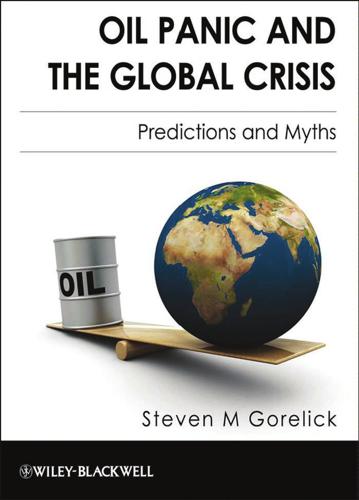
Oil Panic and the Global Crisis: Predictions and Myths
by
Steven M. Gorelick
Published 9 Dec 2009
“Comparison of Passenger Vehicle Fuel Economy and Greenhouse Gas Emission Standards Around the World”, Pew Center on Global Climate Change. Data courtesy of Jim Nader, Director, North American Business Development, CSM Worldwide, August, 2007. Foster, J. B. (2000). “Capitalism’s Environmental Crisis – Is Technology the Answer?” Monthly Review, 52(7). Sorrell, S. (2009). “Jevons’ Paradox revisited: The evidence for backfire from improved energy efficiency,” Energy Policy, 37(4), April 2009: 1456–69. The 27.5 mpg standard went into effect in 1985 but was reduced from 1986 to 1989 and reinstituted in 1990. Bezdek, R. H. and R. M. Wendling (2005). “Fuel Efficiency and the Economy,” American Scientist, 93(2): 132.
…
King approach, 4–9, 61, 68–9 backdating system, 136 extensions to, 80–1 career, 4 global oil endowment estimates, 124 natural gas endowment estimate, 180 predictions global oil production, 8–9, 95–8 natural gas production, 95 US oil production, 6–8, 88–91 on soothsaying, 98 revised endowment estimates, 124 success, 11–12 Hubbert’s curve, 5–6, 73, 80, 90–2, 110–12 appeal, 10–11 contradiction to application, 120 Hughes, Howard, Senior, 223 Hurricane Katrina, 49, 218 hybrid electric vehicles, 215 hydraulic mining, 157 hydrocarbons, 17 IEA, 72, 163–4 impurities, 40 in-situ recovery, 170 India carbon dioxide emissions, 217 coal, 180–1, 217 industrial development, 74–5 oil consumption, 74–6, 147, 150–2 oil production, 75–6 oil-use intensity, 150–1 vehicle ownership, 204–6 Indonesia oil production, 66 OPEC membership, 23 palm oil, 212–13 political stability, 217 industrial development, oil consumption and, 74–6 Index inflation, 77–8 innovation, rate of, 222–3 International Energy Agency (IEA), 72, 163–4 International Monetary Fund World Economic Outlook, 154 Iran discoveries, 138 oil exports, 64 OPEC membership, 23 political stability, 217 revolution, 115 Iran, Shah of, 64 Iran–Iraq war, 115 Iraq OPEC membership, 23 political stability, 217 wells, 96 iron, 101–2 Israel, 63, 113 oil shale, 172 Japan oil imports, 36 vehicle ownership, 205 jet fuel, 176 need for, 109–10 Jevons, William Stanley, 199 Jevons’ Paradox, 199 Jubilee field, 139 Jupiter field, 189 Kara Sea, 145 Kashagan field, 138 Kazakhstan, 126, 138 Kern River oil field, 166 kerogen, 170 kerosene, 19 Khusaniyan oil field, 25 Kirkuk oil field, 71 Kuwait, 23, 67 lag effect, 48 lead, 101–2, 106 235 leapfrogging, 108–9, 213–15 lease condensate, 27, 39 Leiby, Paul, 208 Libya OPEC membership, 23 political stability, 217 lifting (production) costs, 23, 42–3, 133–4, 142 light trucks, 200 “Limits to Growth” model, 59–61 liquefied petroleum gas (LPG), 27 lode deposits, 156 logistic curve, 5–6, 14–15, 90–1, 93–4 LPG, 27 lubricants, 17, 38, 40, 173, 174 lubrication oils, 19 Malthus, Thomas, 58–9, 82 Malthusian doctrine, 58–9 Manning, Van H., 62 mass balance, 10, 124, 221–2 Massachusetts Institute of Technology (MIT), 59, 215 McCabe, Peter, 118–21 mercury, 108–9 metals price trends, 103–7 production, 100–2 methane, 18 Mexico, oil reserves, 65, 144 Michigan Basin gas field, 140 Middle East conflicts, 63, 112–13, 115 Minerals Management Service, 26, 28 Montana, 176 myths, 87–181 National Energy Program, 64 national oil bank, 218–19 natural gas conversion to liquid fuels, 173–4 description, 18 discarded, 177 discoveries, 70–1, 128–9, 138, 140, 145–6 236 Index natural gas (cont’d ) initial in-place, 164–5 liquids see NGLs peak estimation, 96 powering motor vehicles by, 210 synthetic fuel from, 175–7 USGS Assessment, 177–9 natural gas condensate, 138, 165, 189 natural gas consumption, 177, 196 natural gas endowment, 177–9 natural gas field growth, 135 natural gas liquids see NGLs natural gas plant liquids, 39 natural gas production, US, 95 natural gas reserves, 177 growth, 135–6 replacement, 138 natural gas resources, 177–80 natural gas, US offshore, 128–9 Nature, 215 neo-Malthusian, 59–62, 66, 98, 103 New York City, horses, 206 NGLs, 27, 28 Nigeria bonus payments, 125 corruption index, 217 OPEC membership, 23 political stability, 217 non-renewable resource model, 195–6 non-renewable resources, 100–3 normal distribution, 93–4 North Sea, oil reserves, 65 Norway, oil production, 66 OAPEC, 23 embargo in 1970s, 63, 115 members, 23 production, 24 offshore oil, 139 oil conventional, 27 definition, 17 era, 1, 3 initial in-place, 164–5 Oil and Gas Journal, 29, 31, 136 oil availability, 220 oil business, 20–3 return on investment (ROI), 21 oil consumption by country, 33–4, 148 per capita, 33, 35, 74–5, 147–9 industrial development and, 74–6 production vs., 38–40 see also oil-use intensity oil crises 1916, 62–3 1918, 63 1970s, 63–5 oil demand, 220 oil dependence, 26, 35–6, 61, 195, 199, 208–9, 213, 215 oil dependence, cost, 12–13 oil depletion models, 8–9 predictions, 61–2 see also oil crises oil discoveries deficit, 66–7 global, 138–44 number peak, 73 peak production and, 73–4 production and, 66 volume peak, 73–4 oil endowment definition, 17 global estimates, 8–9, 119–21, 124 as inflated, 68–9 USGS, 9, 28–9, 68–9, 119–20 historical assessments, 119–20 Hubbert curve and, 7–9 peak oil timing and, 68–9 regional breakdown, 32 status in 2009, 29–31 total, 28 see also US, oil endowment oil expenditures, 79, 153–6 oil extraction price ranges for profitable, 163–4 stages, 162 oil fields, 97 Index oil finding costs, 42–3, 53, 56, 133–4 oil imports, 35–7 from OPEC, 36–7, 208 oil lifting costs, 43, 54, 56 oil panics see oil crises oil price, 24–5 annual average, 77–8, 116 inflation-adjusted, 78–9, 114–15, 116 relative to wages, 114–15 by quality, 40–1 demand and supply relation, 24 gasoline price and, 44–5, 206, 217 reserves and, 132 spikes in, 78–9, 114–15, 219 stability, 26, 217–19, 224 oil production by country, 32–3 by region, 94 consumption vs., 38–40 costs, 23, 42–3, 133–4, 142 curve fitting, 6–9 declining, 65–6, 71–2, 80–1 global Hubbert predictions, 8–9, 95–8 population vs., 111 replacement by reserve additions, 136–8 trend, 110–11, 203–4 OPEC, 33 peak see peak oil see also US, oil production oil quality, 40 pricing by, 40–1 oil recovery technology, 121, 222–3 oil reserves booking, 125–6 by country, 32, 34 global, 123, 132–8 estimates as inflated, 67–8, 124–5 prices and, 132 industry exaggeration, 69, 125 possible and probable, 72 proven, 72 resources vs., 126 237 SEC rules, 69, 125–6 status in 2008, 31–2 oil resource pyramids, 160–5 global, 163–5 US, 161–2 oil sands Canada, 27, 29, 122, 132, 136, 168–70 US, 162, 168 oil shale global, 172–3 US, 162, 170–2 oil shocks, 155–6 oil, unconventional, 27, 165–75 oil-use efficiency see efficiency oil-use intensity, 148–52 oil wells, 96–7 oil window, 170 Oklahoma, 62 OPEC, 21, 23–6 dependence on, 36–7, 208 members, 23 price control, 24–6, 218 price rises in 1970s, 63–4 production, 24–5, 118, 218 quotas, 24, 67 reserves, 23 estimates, 67–8, 124–5 OPEC Basket, 24, 41, 56 Organization of Arab Petroleum Exporting Countries, see OAPEC Organization of Petroleum Exporting Countries, see OPEC Orimulsion, 167 Orinoco heavy-oil belt, 167 overshoot and collapse, 60 palm oil, 212–13 panic, see oil crises patent activity, 222 PDVSA, 168 peak oil, 3–4 effects, 62 Hubbert predictions, 7–9, 11–12 238 Index peak oil (cont’d ) modern proponents, 124 oil company views, 16 oil discovery volume and, 73–4 oil endowment and, 68–9 US Department of Energy predictions, 81 peanut oil, 212 Pennsylvania, 1, 20, 160, 176 Peru, oil reserves, 144 petroleum composition, 18–19 definition, 17 refinement, 18–19 unconventional, 27 see also gasoline and oil petroleum endowment, 178–9 Petroleum Producers Association, 20 petroleum products, from barrel of oil, 37–8 Petroleum Week, 88 placer deposits, 156 plankton, 17 platinum, 106 political stability, 217, 221 population growth, 5, 58–61, 111 Porter, Edward, 114 predictions, 2, 4–13, 60–3, 87–93, 95–99, 123–4, 128, 130, 134–5, 223 price elasticity of demand, 45, 56 price gouging, 48–9 PricewaterhouseCoopers, 217 primary recovery, 162 private investment, 144 processing gain, 38, 39 producer rebound, 200 production costs, 23, 42–3, 133–4, 142 production decline, scarcity and, 98–103 profitable oil extraction prices, 113–4 Prudhoe Bay oil field, 128 Qatar, 23, 74, 176 Rand Corporation, 172 reasonable certainty, 125–6 rebound, 199–200 recession, 25, 154–5 recovery factor, definition, 18 remaining reserves, 28 renewable energy resources, 216 renewable resources, 98–100, 102 Requa, Mark L., 63 research and development spending, 222 reserve additions, 127, 130, 136–7 reserve base, 184 reserve growth, 28, 127, 134–6 reserves booking, 125–6 definition, 17, 122 private investment and, 144 revisions based on backdating, 136 see also gold reserves; natural gas reserves; oil reserves resource endowment, 6 resource pyramid, 156–73 resource substitution, 107–8, 207 resources definition, 17, 122 non-renewable, 100–3 renewable, 98–100, 102 reserves vs., 126 rock bit, 223 Royal Dutch Shell in-situ recovery method, 170 oil discoveries, 144 oil reserves, 23, 69, 125–6 Russia heavy oil, 166–7 natural gas, 145 oil production, 32, 144–5 oil reserves, 144 Sasol, 176 Saudi Arabia oil consumption, 74 oil production, 32, 71–2 Index incremental cost, 114 spare capacity, 118 oil reserves, 72 OPEC membership, 23 scarcity, 61, 77–9, 98–116, 186, 196, 219, 222 scarcity rent, 116–18 Science, 2, 5, 65, 90 Scientific American, 106 SEC, 69, 125, 126 SEC Rule (4–10), 125 secondary recovery, 162 security, 12–3, 64, 195, 217–9, 221 Shell see Royal Dutch Shell Shell Canada, 169 Shenhua China Coal Liquefaction Corporation, 177 silver, 106, 108 Simmons, Mathew, 104 Simon-Ehrlich bet, 103–5 Simon, Julian, 103–4 Six Day War (1967), 112–13, 115 Smithsonian Institute, 63 social disintegration, 217 solar power generation, 214 “sour” oil, 40 South Africa, transportation fuels from coal, 176 South America, heavy oil, 167 South Korea, vehicle ownership, 205 South Pars field, 138 soybean oil, 212–13 Spindletop, 160 spot price, 48 St.
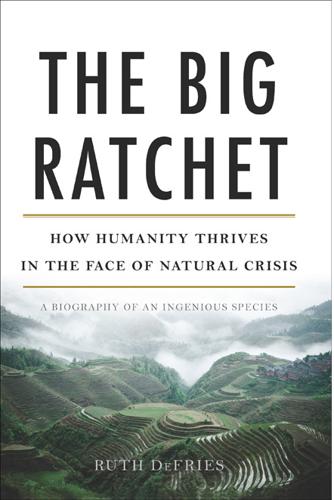
The Big Ratchet: How Humanity Thrives in the Face of Natural Crisis
by
Ruth Defries
Published 8 Sep 2014
For women between the ages of eighteen and forty-nine years old, being overweight is defined as having a body mass index (BMI) of between 25 and 29.9; obesity for women in this age group is defined as having a BMI of 30 or above. 194Moose, caribou, and a variety of plants: See Kuhnlein et al. (2004), who analyze the changing dietary patterns and the obesity of the Inuit in modern times as an example of how the Big Ratchet is changing diets even in remote locations. 194Traditional, healthy options: Drewnowski and Popkin (1997) discuss this irony. 194More than a billion are overweight: Popkin et al. 2011. 194Eight people were overweight: Some 870 million people (approximately 12.5 percent) were chronically hungry around the world in 2010–2012 (UN FAO et al. 2012); 1.4 billion people (approximately 20 percent of the world’s population) were considered overweight in 2008, with “overweight” being defined as having a body mass index of greater than 25 (WHO 2013). 195Tractors, fertilizers, and pesticides: Popkin (2006) discussed the underlying global forces for the nutrition transition, including globalization, agricultural practices, supermarkets, and mass media. 195Overweight by the year 2030: Wang et al. 2008. 195Diseases related to being underweight: Hossain et al. 2007. 196Dismay, and for good reason: For example, see Tilman et al. (2011) and Foley et al. (2011). 196Contributions to greenhouse gases: DeFries and Rosenzweig 2010; Foley et al. 2011. 196Producing a pound of potatoes: Fiala 2009; UN FAO 2006. 197In the atmosphere climbs: Hatfield et al. (2011), Lobell et al. (2011), and Morton (2007) are a few sources in the large amount of literature on the impacts of climate change on agriculture. 197Sufficient for the coming demand: See Bogardi et al. 2012 and recommended readings listed in that source. 197Fields and pastures to grow food: In many countries abandonment of agriculture and tree plantations have led to a recovery of some of the lost forest cover (Rudel et al. 2005). 198Fast-food chains in the United States: Kaimowitz et al. 2004. 198Chicken, pigs, and cattle: Maximum exports of palm oil from Indonesia were to India and China, and soybeans were to Spain and China in 2010, according to the United Nations’s Food and Agriculture Organization (FAOSTAT), http://faostat.fao.org/. 198Pushes food prices higher: Fargione et al. 2008. 198Unable to put food on the table: Many studies have quantified the contribution of biofuels to competition for land and increasing food prices, such as Mitchell (2008). 198“Food Security Rattled in 2008”: Daily New Egypt 2008. 198“Riot Warning”: Al Bawaba 2008. 198“Egyptians Riot over Bread Prices”: London Daily Telegraph 2008. 198“Hungry Haitians Expand Food Riots”: Associated Press 2008. 198“Food Riots Will Spread”: Cleland 2008. 198Drawing to a close: Rosegrant et al. 2012. 199Where people have the means: Popkin (1999) characterized a final stage in the nutrition transition in which people switch to healthier alternatives. 199Blow are far from assured: Clay (2011) and Foley et al. (2011) discussed ways to reduce the environmental impact of food production. 200Most obvious and immediate problem: The English economist William Jevons noted in the 1800s that gains in energy efficiency from coal use during the industrial revolution counterintuitively led to an increase rather than a decrease in demand. This is known as “Jevons’ paradox” (Alcott 2005). A similar paradox is true for food. As efficiencies in food production have increased, the amount consumed has also increased beyond physiological requirements. 201Learned to do long ago: An example of waste recycling comes from Adarsh Vidya Mandir, a college not far from Mumbai, India, with an award-winning experiment in the use of specially designed toilets to recover nutrients from human waste.
…
Deep Wells and Prudence: Towards Pragmatic Action for Addressing Groundwater Overexploitation in India. World Bank, Washington, DC. Zamir, D. 2001. Improving plant breeding with exotic genetic libraries. Nature Review Genetics 2:983–989. Chapter 10: Farmer to Urbanite Al Bawaba. 2008. Riot warning. April 10. Alcott, B. 2005. Jevons’ paradox. Ecological Economics 54:9–21. Associated Press. 2008. Hungry Haitians expand food riots. April 9. Bloom, D. 2011. 7 billion and counting. Science 333:562–569. Bogardi, J., D. Dudgeon, R. Lawford, E. Flinkerbusch, A. Meyn, C. Pahl-Wostl, K. Vielhauer, and C. Vorosmarty. 2012. Water security for a planet under pressure: Interconnected challenges of a changing world call for sustainable solutions.

The Second Machine Age: Work, Progress, and Prosperity in a Time of Brilliant Technologies
by
Erik Brynjolfsson
and
Andrew McAfee
Published 20 Jan 2014
The lower prices and improved quality of their outputs did not lead to enough increased demand to offset improvements in productivity. On the other hand, when demand is very elastic, greater productivity leads to enough of an increase in demand that more labor ends up employed. The possibility of this happening for some types of energy has been called the Jevons paradox: more energy efficiency can sometimes lead to greater total energy consumption. But to economists there is no paradox, just an inevitable implication of elastic demand. This is especially common in new industries like information technology.21 If elasticity is exactly equal to one (i.e., a 1 percent decline in price leads to exactly a 1 percent increase in quantity), then total revenues (price times quantity) will be unchanged.
…
.: GPS satellites maintained by see also economic growth, government role in GPS Graetz, Michael graphics, digital graphs, logarithmic Great Depression Great Recession Great Stagnation, The (Cowen) Greenspan, Alan Greenstein, Shane Greenwood, Jeremy Gregersen, Hal Grimbergen gross domestic product (GDP): alternative metrics to effect of Great Recession on increases in omissions from U.S. growth in see also economic growth; productivity Guo, Terry Hall, David Haltiwanger, John Hanson, Gordon Hanushek, Eric Hayek, Friedrich health, human: improvements in measurements of Health Affairs health care coverage hearing, computer-aided Heim, Bradley Hemingway, Ernest Hendren, Nathaniel Hendy, Barry Hewlett Foundation HireArt Hitchhiker’s Guide to the Galaxy, The (Adams) Hitt, Lorin Holmstrom, Bengt Homo sapiens Honda Hoover, Herbert housing, online data on How College Affects Students (Pascarella and Terenzini) HTML Hu, Jeffrey Hubbard, Elbert Huberman, Bernardo Hulu human development index humanity, social development of Hyatt, Henry IBM iChat IDC ideation, see creativity immigration income: average basic negative taxes on normal distributions in see also wages Industrial Revolution negative consequences of see also Second Industrial Revolution inequality: consequences of education and political see also spread inflation indexes information, control of information and communication technology (ICT) see also global digital network Information Rules (Shapiro and Varian) information technology (IT): demand elasticity in intangible assets associated with productivity correlated with infrastructure technological Innocentive innovation benefits of complementary economic measurement of effect of digitization on entrepreneurship’s role in government support of impact of spread on open; see also crowdsourcing organizational population growth and prizes for productivity linked to recombinant slowing down of unstable competitive effects of see also creativity Instagram Intel intellectual property International Conference on Computer Science and Software Engineering Internet collective projects on comparison sites on consumer surplus created by creation of education on housing data on retailing on sharing economy on time accounting for traffic on user costs of user-generated content on; see also social media see also global digital network; World Wide Web Intuit iOS iPad iPhone iRobot Israel iTunes Jaimovich, Nir Japan, productivity improvement in Jaspers, Karl Jelinek, Frederick Jennings, Ken Jensen, Robert Jeopardy! Jeppesen, Lars Bo Jevons paradox Jobs, Steve Johnson, Lyndon Jorgenson, Dale Joy, Bill Kaggle Kalil, Tom Kane, Tim Kaplan, Steve Karabarbounis, Loukas Karpov, Anatoly Kasparov, Garry Katz, Lawrence Kauffman Foundation Kayak Kelly, Kevin Kelvin, Lord Kennedy, Robert F. Kerala, India Keynes, John Maynard Khan, Salman Khan Academy Kia Kim, Heekyung Kinect KinectFusion King, Martin Luther, Jr.
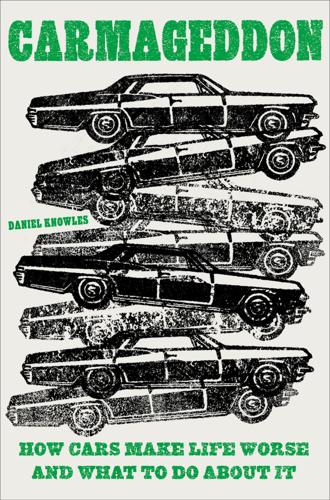
Carmageddon: How Cars Make Life Worse and What to Do About It
by
Daniel Knowles
Published 27 Mar 2023
What is the purpose of life? For us, the answer will be clear, established and for all practical purposes indisputable: The purpose of life is to produce and consume automobiles.” Long before planners realized it, Jacobs had realized the problem of “induced demand” that roads create. This is also known in effect as Jevons paradox. That is, if you make something more abundant, the price of it will fall, and people will use it much more than they previously did. William Stanley Jevons was an English economist in the nineteenth century who looked at coal. Jevons noticed that when James Watt improved the efficiency of the steam engine, so that it did not need anywhere near as much coal to use, the result was not that demand for coal fell.
…
People will start using them as delivery vehicles to run errands. Sam Schwartz imagines businessmen taking meetings in Manhattan sending their cars to drive around in circles rather than find a parking space. As the technology gets cheaper, more and more people will buy them, and use them for ever more outlandish things. It will be chaos. Jevons paradox will win again. And yet, inevitably perhaps, given he is a car executive, Musk does not think that this means we should not all buy autonomous vehicles. Rather, the solution, apparently, is “some combination of tunnels and double-deckering freeways.” He did admit that “flying cars” are not the answer, because people do “not want the skies to be swarming with helicopters.”
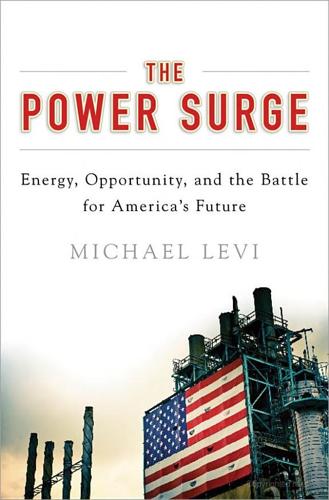
The Power Surge: Energy, Opportunity, and the Battle for America's Future
by
Michael Levi
Published 28 Apr 2013
It can actually result in more. 138 • THE POWER SURGE The claim that efficiency does not actually reduce resource consumption became known as the Jevons Paradox, and more than a century after his death it lives on in fights over the true promise of greater efficiency in American energy use. “Mr. Wizard, meet Mr. Jevons,” one prominent skeptic of improved fuel efficiency wrote mockingly on his blog.96 Yet reality appears to disagree with the strong skeptics. When it comes to cars, the naïve invocation of the Jevons Paradox leads to a simple conclusion: if all Americans start buying new cars that are twice as fuel efficient as their old ones, they will drive more, because the cost of driving will have been cut in half.

Ghost Road: Beyond the Driverless Car
by
Anthony M. Townsend
Published 15 Jun 2020
They’d urge the steelmaker to slash prices, expand production, take market share from their competitors, and earn larger profits overall (even though per-unit profits would shrink). As Jevons realized, this would force competitors to do the same, by getting hold of their own coal-conserving technology, or be forced out of business. And here’s the painful irony of what’s come to be called the Jevons paradox, or the rebound effect—even though our hypothetical steelmaking sector has converted (quite swiftly, in fact) to the new coal-conserving technology without any government subsidy, it is using more coal than ever. The invisible hand of the market giveth, and it taketh away. Things only get worse from here, as the effects of cheap steel made with efficient coal-produced power ripple through the economy.
…
“self-driving,” 38 early self-steering schemes, 5–6 modern-day myths about future, xv–xvi scan, study, and steer as basic tasks, 34–38 self-driving shoes, 52, 53 three big stories of the driverless revolution, 16–20, 187–88, 238, 248, 253 see also financialization of mobility; materialization; self-driving vehicle research; specialization driving as coming-of-age story, 21–22 cruise control and, 24–25, 26 decline in teen driving, 22–23 distracted driving, 25, 28–29, 32–33 drinking and, 24 graduated licensing, 23 drones, 40, 127, 246–47 EasyMile, 60, 103–4, 104 Ebee, 129 e-commerce, 17, 117, 118–19, 120 see also Amazon; continuous delivery Edgar, John, 247 electrification and automation as symbiotic technologies, 54–55 electronic tolling, 169–72 Endeavor space shuttle, 74 English Civil War, 161 e-Palette, 125, 142 EUREF, 129 Evans, Alex, 116 éX-Driver (anime series), 149–50 Facebook, 67 fear of intelligent automobiles, 39, 43, 45 FedEx, 27, 130 “fifth-generation” (5G) wireless grid, 42 financial crisis of 2007–2008, 7, 164, 182 financialization, general, 163–64 financialization of mobility curb pricing and curb-access fees, 220–21, 222–23 electronic tolling, 169–72 monetization of vehicle owner data, 32 overview, 17, 163–65, 244 realignment of money and power, 181–83 see also congestion pricing first mile, 60 fleet learning, 37 Florida Automated Vehicles Summit, 55 Ford, Henry, 12 Ford Motor Company, 12, 32, 58, 218–19, 231, 233 forecasting vs. predicting the future, 13 free roads, end of, 163, 165 free transfer in transit system, 89, 90, 91 Frey, Carl Benedikt, 153, 154, 236 Frost, Robert, 249 fulfillment centers and distribution centers, 121, 123, 132, 136–37, 152, 158, 196n fulfillment zone, 187, 188, 196–99, 198–99 Futurama (1939 World’s Fair), 5 future car of the 1950s, 50–52, 51 Future of Humanity Institute, 238 future shock, 120 Gao Lufeng, 65 Gates, Bill, 237–38 General Motors (GM) AVs tested in San Francisco, xv disengagements by Chevy Bolts, 41 Futurama (1939 World’s Fair), 5 in-car surveillance and driver monitoring, 32 Super Cruise, 29 Gensler, 191 ghost cars, 27 ghost Main Street businesses, 140–42 ghost restaurants, 139–40, 197 ghost road, defined, xvi Gibson, Mel, 28 Gibson, William, 10, 245 GitHub, 248 Glaeser, Edward, 130, 206 Goldsmith, Stephen, 222 Google ambitions, 183 Android operating system, 7 busing of workers, 100 self-driving car project, xiv–xv, 7, 8, 35, 84, 133, 230 and vehicular specialization, 54 Waze acquired by, 87 see also Waymo Gould, Jay, 180 GPS tracks, 35 Grab, 177 graduated licensing, 23 Green Summit, 139 guardian angels, 246–47 Hackett, Jim, 32 Hawking, Stephen, 237–38 Heppner, Henning, 129 Herron, Ron, 74 Hidalgo, Anne, 220 highwaymen (England’s East Midlands), 161 Hitachi, 67, 79 HopSkipDrive, 95 horsecars, 174–75 houses, increased size of, 116 human intelligence tasks (HITs), 41 IBM, 36 Icebox, 243–44 IDEO, 125 IKEA, 72–73 Image of the City, The (Lynch), 228–30 immutable objects, 49 Impellitteri, Vincent, 165 Induct, 103, 104 infill housing, 204, 253–55 informal transit, 99–100, 106 Inrix, 9 Intel, 8, 35 “Introducing the self-driving bicycle in the Netherlands,” 62 Intuit, 125 Jacobs, Jane, 57, 228 JD.com, 118, 119, 137 Jelbi MaaS app (Berlin), 109, 110, 216 Jevons paradox, 144–45 Jevons, William Stanley, 143–44, 145 just-in-time inventory approaches, 157 Ju, Wendy, 40 Kalanick, Travis, 140, 179 Kamen, Dean, 62 Keller, David H., 84–85, 94 Keolis, 104 Khashoggi, Jamal Ahmad, 178 Khosrowshahi, Dara, 98, 179 Kia, 31 Kim, Sangbae, 46 King, David, 132, 247 King, Steven, 42 kipple, defined, 142–43 Kitchen United, 139 Kiva Systems, 136, 137 Kiwibots, 57 Knightley’s (Wichita, KS), 192 Koch, Charles and David, 40 Kohlhase, Janet, 130, 206 Kohn Pedersen Fox, 209, 211 Koolhaas, Rem, 206 KPMG, 117, 218 Kurzweil, Ray, 234 Ladd, Brian, 80 last mile continuous delivery and, 121–29 conveyors and, 124–25 cost savings, 130 driverless shuttles, 60, 123n falling costs and demand, 130–32, 131 in food delivery, 140, 147 freight AVs, 125–26, 130 Hannah school buses, 127 nighttime delivery, 128–29, 130, 217 origin of term, 122 package lockers and, 127, 130, 219, 221 piggybacking deliveries, 126–27 term use in shipping, 123n legibility, 229–30, 231 Legible London, 230 Leonhardt, David, 8–9 Les Vergers Ecoquartier (Switzerland), 202 Levandowski, Anthony, 40, 68 Levy, Frank, 150, 151, 152 lidar, 34–35 Ligier Group, 103 Lime Bike, 67 “Living Machine, The” (Keller), 83–85, 94, 237 loss aversion, 50 Lowe’s, 116 Lufa Farms, 147 Luks, George, 174 Lyft competition with Uber, 177–78, 179 initial public offering, 97, 177 market cap, 97 number of vehicles, 10 relationship with transit, 215 specialization and variety of rides, 95, 96 subscriptions, 244 taxibots, 97 traffic congestion and, 168 Lynch, Kevin, 228–30 MaaS.
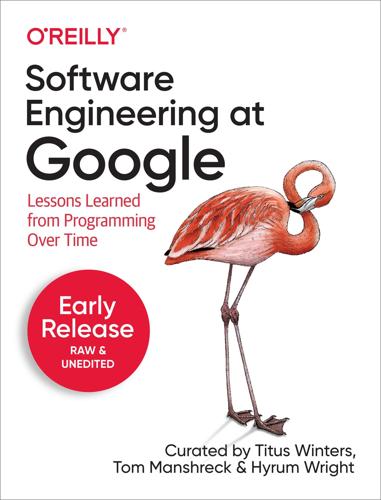
Software Engineering at Google: Lessons Learned From Programming Over Time
by
Titus Winters
,
Tom Manshreck
and
Hyrum Wright
Published 17 Mar 2020
If your tasks require effort that scales with lines of code, that’s concerning. 19 This is not to say that decisions need to be made unanimously, or even with broad consensus - in the end, someone has to be the decider. This is primarily a statement of how the decision making process should flow for whoever is actually responsible for the decision. 20 https://en.wikipedia.org/wiki/Jevons_paradox Chapter 2. Build Systems & Build Philosophy Written by Erik Kueffler Edited by Lisa Carey If you ask Google engineers what they like most about working at Google (besides the free food and cool products), you might hear something surprising: engineers love the build system1. Google has spent a tremendous amount of engineering effort over its lifetime in creating its own build system from the ground up, with the goal of ensuring that our engineers are able to build code quickly and reliably.
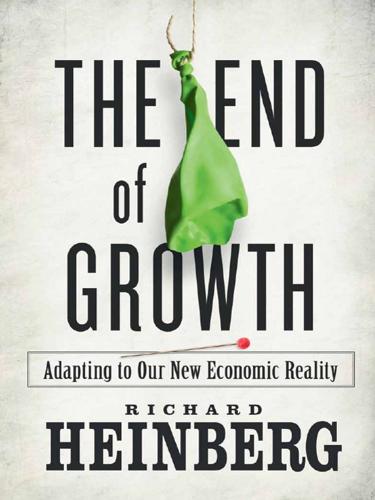
The End of Growth: Adapting to Our New Economic Reality
by
Richard Heinberg
Published 1 Jun 2011
,” SciScoop Science, posted September 17, 2005; Robert Bryce, “Green Energy Advocate Amory Lovins: Guru or Fakir?” Energy Tribune, posted November 12, 2007; Robert Bryce, “An Interview With Vaclav Smil,” robertbryce.com, posted July 2007. 29. This is known as the Jevons Paradox or the Khazzoom-Brookes postulate. In one sense, the Jevons Paradox has fading relevance in a world of declining energy resource availability: in the future, efforts to increase efficiency will probably not lead to declining resource prices, merely to prices that are not rising as fast as they would without such efforts. However, another, somewhat analogous trend will come into play: In order for society to save large amounts of energy through efficiency, very large investments in new and more energy efficient infrastructure are required (railroads, electric cars, etc.).
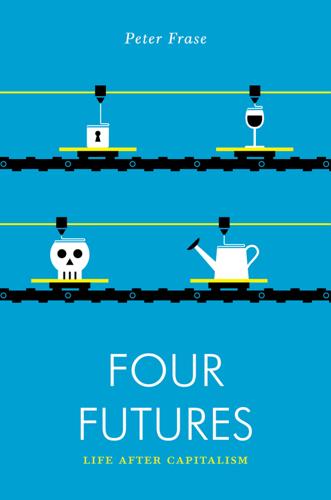
Four Futures: Life After Capitalism
by
Peter Frase
Published 10 Mar 2015
In his 1865 book The Coal Question, Jevons analyzed British economic growth and its dependence on tapping coal reserves.5 He projected that within less than a century, economic growth would have to stall as coal production peaked and declined. Moreover, he saw efforts at energy conservation as inevitably doomed. Making the case for what came to be known as the “Jevons paradox,” he argued that increased energy efficiency would simply lead to more energy consumption because the cheaper power would be used more. What Jevons could not have known was that, while his assessments of coal reserves were broadly correct, the advanced capitalist economies would soon shift their energy base to petroleum.
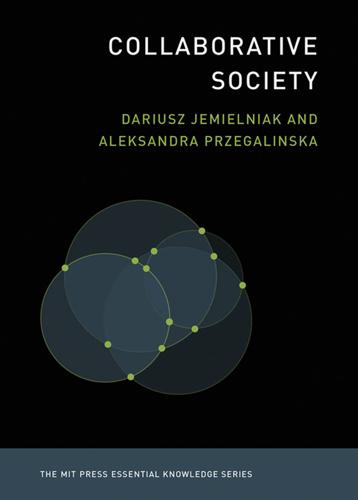
Collaborative Society
by
Dariusz Jemielniak
and
Aleksandra Przegalinska
Published 18 Feb 2020
As we look at how other scholars are positioned on this issue, Henry Lieberman and Christopher Fry acknowledge and agree that efficiency is perhaps the most common political response to today’s issues of biophysical limitations and scarcity.45 Such a response, however, often overlooks some of the predictable consequences of efficiency that appear in profit-based economies. The Jevons Paradox, a key finding attributed to the nineteenth-century British economist Stanley Jevons, states that efficiency improvements are typically coupled with an absolute increase of consumption resulting from lower prices per unit and a subsequent increase in demand.46 For example, the invention of more efficient steam engines allowed for cheaper transportation that catalyzed the industrial revolution, but it heavily increased the use of fossil fuels.
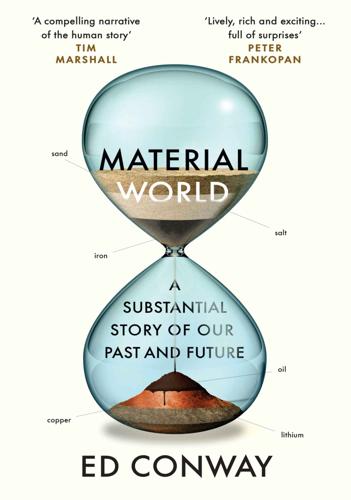
Material World: A Substantial Story of Our Past and Future
by
Ed Conway
Published 15 Jun 2023
The weight of the chassis and body have been falling in recent years but rather than using those lighter metals to make a lighter car, car manufacturers tend to compensate by making their cars bigger and including more features. This is a small-scale example of what economists sometimes call the ‘Jevons paradox’, after the economist William Stanley Jevons, who posited back in the nineteenth century that however much more efficient we would make our engines and machines, we would simply find new excuses to burn just as much (or more) coal. The upshot of this race to reduce the weight of the car bodies (even if it means replacing it with other gadgets) is that steelmakers are engaged in a battle with physics, and with their counterparts in the aluminium industry, to produce ever lighter alloys.
…
Ltd) 13 , 402 , 406 , 407 , 408 , 409 , 410 , 421 caustic soda 152 , 153 , 190 , 263n CCS see carbon capture and storage celluloid 356 Celtic tribes/Celts 144 , 146–7 , 161 , 259 , 266 cement 9 , 41 , 71–2 , 73 , 75–9 , 84 , 100 , 115 , 340 and carbon emissions 81 , 82–5 Portland 75 , 80 , 83 , 84 , 85 see also concrete CFCs see chlorofluorocarbons Chalcolithic period 258 chalcopyrite 294 , 304 chalk 73 , 76 , 81 Challenger , HMS 291 , 292 , 301 Chañaral, Chile 273 Chance Brothers, Smethwick 48 , 52 , 55 Chang, Morris 108 , 116 charcoal 218 , 219 , 220 , 222 Charles I, of England 165 cheese/cheesemaking 128–9 , 131 , 132 , 134 , 190 , 353 chert 233 Cheshire fertiliser plants 10 salt industry 143 , 145–51 , 154–5 , 157 , 158–62 , 177 , 180 , 183 , 184 , 206 , 219 , 395 see also Imperial Chemical Industries Chevron (company) 309 Chile 371 , 391–3 , 396 copper production 259 , 261 , 288 , 301 ; see also Chuquicamata and deep-sea mining 301 iodine 176 lithium production 384 , 385 , 391–3 , 395 ; see also Salar de Atacama nitrates industry 170–73 , 174–6 , 393 saltpetre 175–6 , see also Saltpetre War see also Antofagasta China/Chinese 37 , 65 , 95 , 119 , 120 , 135–6 , 235 , 236 , 396 ballpoint pens manufacturing 229–30 battery production 406 , 407 , 409–10 , see also CATL coal-fired power stations 363 concrete 80 , 85 copper smelting and refining 261 , 267 , 269 and deep-sea mining 297 , 298 Discourse on Salt and Iron 137 , 191 electric cars 404 explosives 120 , 168 famine 205 Guanzi 136 iodine deficiency 137–8 iron and steel industry 203 , 205 , 207 , 213 , 217 , 218 , 229 , 231 , 244 , 247 lithium 385 plastic 359 recycling batteries 421–2 salt lakes 385 salt making 147 , 313 salt monopoly 135 , 136–8 saltpetre 164 and sand mining 69–70 silicon chip production 34 , 99 , 104–5 , 106 , 114–16 skyscrapers 78 , 79–80 , 234 smartphones 92 and USA 104 , 115 , 205 , 207 , 411 China National Salt Industry Corporation 138 Chincha Islands 165–7 , 172 , 275 , 298–9 chloralkali process 151–3 , 156 , 190 , 395 chlorine/chlorine gas 128 , 152 , 153 , 157 , 174 , 263n , 390 , 428 , 433 chlorofluorocarbons (CFCs) 318 , 341n chlorophyll 166 , 349 chloroquine 152 chromium 21 , 225 , 277–8 Chuquicamata, Chile 265–6 , 269–71 , 304 , 305 copper mine 171 , 266–7 , 268 , 269 , 270 , 271–2 , 273 , 274 , 280 , 281–3 , 284 , 285 , 288 , 294 , 304 , 305 , 327 tailings dam (Talabre) 272–3 Clarion-Clipperton Zone (Pacific Ocean) 293 , 294 , 298 , 302 Clayton, Pat 30 , 31 Cleopatra Beach, Anatolia 32 Cleveland Potash (company) 180–81 polyhalite mining 181–7 Climafuel 82 climate change 15 , 65 , 66 , 81–6 , 305 , 311 see also carbon emissions clingfilm 354 Club of Rome 276 , 294 The Limits to Growth 276 , 277 , 279–80 , 286 , 321 Clydach, Wales: nickel refinery 261 coal 15 , 16 , 20 , 22 , 82 , 196 , 198 , 215 , 216 , 219–22 , 228 , 268n , 317 , 319 , 334 , 363 , 434 coal-powered machinery 202 , 257 see also coke coal ships 219–20 cobalt 15 , 17 , 21 , 149 , 253 , 411 , 412 , 415–16 , 417 , 419 , 443 in batteries 408 , 409 , 416 sub-sea 293 , 294 , 300 Cochrane, Lord Thomas 265 Codelco (company) 13 , 270 , 283 coke/coking coal 95 , 215 , 219 , 220 , 222 , 311 , 353 , 433–4 needle coke 331–2 , 382 ovens 210 , 213 , 222 , 231 , 332 Colbert, Jean-Baptiste 139 Compass Minerals (company) 158 , 159 computer chips 8 , 90 , 91 , 93 , 107 , 116 , 118 , 203 , 230 , 411 Intel 90 , 112 see also silicon chips computers 9 , 34 , 37–8 , 90 , 91 , 117 , 119 , 274 , 426–7 concrete 6 , 8 , 40 , 41 , 67 , 71 , 72–4 , 75 , 77 , 78 , 79 , 80 , 377 , 425 , 429 , 442 and climate change 81–6 reinforced (‘rebar’) 81 , 198 Roman 75 , 85 , 340 and water 84 Concretene 84 Condori, Pamela 388–9 Confucius 137 , 275 Congo, Democratic Republic of 413–14 , 415 cobalt 149 , 293 , 294 , 415–16 copper 268 , 415 Kamoa-Kakula mine 304 Katanga mines 415–18 , 420 Union Minière du Haut-Katanga 415–18 uranium mine 415 Cook, Captain James 220 copper 7 , 15 , 16 , 17 , 18 , 170 , 171 , 182 , 243 , 253–4 , 258 , 277–8 , 279–80 , 287–9 , 303–5 , 373 , 377 , 416 , 417 , 429 , 437 , 441 and bronze 258–9 cathodes 267 and n , 284 , 285 , 392 ‘concentrate’ 267 and electricity 6 , 22 , 89 , 253 , 254–5 , 256–8 , 263 , 264 , 287–9 electrolysed 262–3 , 267n , 285 heap leaching 272 , 303 and magnets 254 mining 258 , 259 , see also Chuquicamata peak 280 , 285 , 294 recycled 420 reserves 285–6 resources 286 smelting and refining 260–61 , 267 sub-sea reserves 293 , 294 , 295 , 296 , 300 telephone wires 60 trade 259–61 in turbines 257 and waste 287 , 300 , 304 Copper Age 258 ‘Copper man’ 266 , 280 Corning (company) 8 , 9 , 59 , 61 Cornucopians 276 , 279 Cornwall: copper and tin mining 259 , 260 , 280 , 437 Corran ferry, Scotland 42 Corran Narrows, Scotland 57 Cort, Henry 220 Cortez gold mine, Nevada 1 , 2–5 , 13 , 267 , 269 , 272 COVID-19 8 , 9 , 20 , 91 , 211 , 319 , 358 Crete: salt 133 Crookes, Sir William 172 cucumbers, growing 346 cyanide 2 , 3 Cyprus 133 , 258 , 278 Czochralski, Jan 102n Czochralski (CZ) process 101–4 , 105 , 107 , 119 , 327 Damascus, Syria: swords 200 Darby, Abraham 220 Davy, Humphry 262 Debruyne, Stefan 391 deep-sea mining 292–303 , 420 deep-sea species 301 Deere, John 202 deforestation 81 , 131 , 147 , 205 , 218 , 247 , 248 , 275 , 293 , 311 , 315 detergents 152 , 153 , 354 Dharasana saltworks, India 142 diazomethane 350 diesel 331 , 345 dinosaurs 27 , 43 dishwasher salt 146 Dogger Bank/Doggerland 74 dolomite 215 , 233 Donetsk, Ukraine 206 Dorador, Cristina 392–3 Dow (company) 155 drugs/medicines/pharmaceuticals 1 , 8 , 9 , 56 , 127 , 150–51 , 152 , 155 , 156 , 176 , 179 , 190 , 191 , 238 , 334 , 344 , 345 , 357 , 376 , 428 , 429 , 440 Dubai 64 , 65 , 66 , 74 , 266 dyes 218 , 219 , 220 , 334 , 345 dynamite 168 East India Company, British 165 economics/economists 1 , 5 , 6–7 , 10–11 , 14 , 17 , 19–20 , 36 , 52 , 56 , 82 , 120 , 204 , 218n , 227–8 , 255 , 256 , 273–80 , 319–20 , 335 , 365 , 367 , 420 , 423 , 424 , 428 , 438–9 Economist, The 149–50 , 324 Edison, Thomas 76 , 77 , 262 , 263–4 , 279 , 288 , 377 , 378–9 , 380 Egyptians, ancient: mummification 312 Ehrlich, Paul 274 , 275 , 276–9 , 284 , 285 , 304 , 326 The Population Bomb 274–5 , 276 , 277 Eiffel, Gustav 200 , 201n Eiffel Tower, Paris 200–1 Einstein, Albert 21 Eisenhower, Dwight D. 336 electric vehicles (EVs) 400–1 see also cars, electric electricity 7 , 21 , 22 , 37 , 53 , 89 , 97 , 251–3 , 255–7 , 305 , 377–8 , 431 , 435 alternating currents 264 and copper 6 , 22 , 89 , 253 , 254–5 , 256–8 , 263 , 264 , 287–9 and light 255 and motors 21 , 256 and polyethylene insulation 351–3 sub-sea cables 434 see also batteries ; electric vehicles electrolysis 262–3 and n , 267n , 432 electromagnetism 151–2 , 254 , 262 electrowinning 284 , 303 Elkem (company) 96 Engels, Friedrich: The Communist Manifesto 276 engines, combustion 317–18 Enlightenment, the 37 epoxy resin 355–6 Epsom salts 178 Espindola, Christian 389 Esso 380 ethane 315 ethylene 344 , 351 , 357 , 358 EUV see extreme ultraviolet EV Group 119 Evans, Joe 145 , 146 EVs see electric vehicles explosives 168 , 169 , 170 , 173 , 188 extreme ultraviolet (EUV) light 112–14 , 116 , 442 ExxonMobil 380 Fairchild Semiconductor 89 , 112 Faraday, Michael 37 , 53 , 257 , 262 Fawcett, Eric 351 , 352 , 358 Ferrocarril de Antofagasta a Bolivia (FCAB) 163–4 Ferroglobe (company) 95 , 97 fertilisers 10 , 20 , 22 , 61 , 201 , 203 , 311 , 344 , 345 ammonia 188 , 432 caliche 375 , 430 green 432 , 434 guano 166–7 , 275 , 299 from natural gas 348–9 , 430 nitrate/nitrogen 166 , 170 , 172 , 173–4 , 176 , 275 , 299 , 348–9 polyhalite 181–2 , 187 potash 179 shortage of 180 fibre optics 7 , 8 , 425 fibreglass 8 , 248 , 356 Fiji 301 Finland concrete towers 83 copper mine 182 fish, deep-sea 301 flak jackets 354 flavourings 345 Fletcher, Seth 373 Floyd, George 414 fluorine 52 flux 39 , 56–7 , 153 , 190 , 215 , 429 Fontainebleau, France: silver sands 42 , 56 , 66 Ford, Henry 226–7 , 281 , 405 , 421 , 427 , 428 Model Ts 227 Forest of Dean 218n Förstemann, Robert 256 Forth Bridge, Scotland 200 , 201 ‘fossil deposits’ 68 fossil fuels 6 , 15 , 16 , 20 , 22 , 317 , 319 , 328 , 399 , 430 building with 433–4 see also coal ; oil ; gas , natural Foxconn (Hon Hai Technology Group) (company) 118 , 119 fracking 322–5 , 365 France 57 , 129 , 174 , 221–2 , 414 and deep-sea mining 298 , 301 and glass and optical aids 35 , 48 salt 130 , 138–9 , 140 , 147 , 154 Franz Ferdinand, Archduke of Austria 47 , 48 Friedland, Robert 253 , 304 Friedman, Milton 11 Fuding, China: battery factory see CATL fulgurites 31 Gait, Paul 284 Galápagos Rift 291 Galileo Galilei 36 Gandhi, Mohandas (‘Mahatma’) 140–42 , 147 , 155 Ganges, River 165 Gary, Indiana: US Steel 208 gas 198 , 257 , 313 liquefied 364 natural 7 , 10 , 22 , 313 , 315 , 318 , 321–2 , 348–9 , 363–7 , 429 , 430 , 434 gasoline see petrol GDP see gross domestic product GEM (company) 421–2 General Electric (company) 257 General Motors (GM) 340–41 , 407 generators 255 , 257 , 262 , 263 , 264 , 273 , 279 , 284 , 288 , 377 , 433 Genoa, Italy Giorgio Bridge 210 Morandi Bridge 81 geothermal plants 257 germanium 89 , 100 , 117 , 262 , 416 Germans/Germany 28–9 , 47 , 152 , 173 , 174 , 196 , 256 , 259 , 298 , 350 , 365 , 414 , 438 cement 76 , 77 coal 334 and explosives 173 , 174 and fertilisers 172–4 glass and optical devices 48–50 , 51 , 52 , 53 , 54 , 55–6 , 93 , 381 iron and steel 225 , 230 , 231 , 365 and oil 333 , 335–9 ; see also Wesseling potash production 56–7 , 180 salt 98 , 132 , 139 , 147 silicon chips 96 , 97–8 , 103 , 113 silver sands 42 Ghawar oil field, Saudi Arabia 314–17 , 320 , 321 , 322 , 323 , 324 , 325 , 326 , 329 , 358 , 362 , 364 , 366 Gibson, Reginald 351 , 352 , 358 Gigafactory Nevada 399–400 , 403–4 , 405 , 406–7 , 408 , 422 Gilf Kebir, Egypt: Palaeozoic sandstones 31 Glasgow 156 glass/glassmaking 8 , 9 , 21 , 31 , 35 , 36–7 , 46–7 , 51 , 52–3 , 54 , 127 , 219 , 426 , 429 , 440 borosilicate 8–9 , 11 , 48 fibreglass 8 flint (lead crystal) 53–4 and fluxes 39 , 56 , 153 , 190 , 215 , 429 German see under Germans/Germany inventing/making 38–41 lead borosilicate 53 Libyan desert 30 , 31 , 33 and lithium 376–7 and refractive indices 53–4 silica 59 and soda ash 154 soda-lime (crown) 39 , 54 stained-glass windows 39–40 structure of 39–40 and taxes 55 , 56 glasshouses/greenhouses 36 , 347–8 , 349–50 Global Battery Alliance 420–21 global warming 315 , 318 , 340 , 430–31 , see also greenhouse gases GM see General Motors gneiss 43 Goethe, Johann Wolfgang von 56 gold/gold mining 1–2 , 182 , 243 , 268n , 269 , 279–80 , 416 , 419 sub-sea 293 see also Cortez gold mine Goldman Sachs 253 Gondwana 94 Goodenough, John B. 381–2 , 383 , 408 Google 115 graphene 443 Graphene Engineering Innovation Centre, Manchester 84 graphite 353 , 382 , 409 , 411 , 433 , 434 Grasberg mine, New Guinea 283–4 gravel 8 , 73 , 74 , 94 , 198 Great Glen Fault, Scotland 42–3 , 57 Great Sand Sea, Sahara 28–30 , 31 , 66 meteor strike 27 , 30 , 43 , 59 greenhouse gases 19 , 81 , 161 , 204 , 217 , 311 , 385 , 399 , 435 greenhouses see glasshouses Gromort, Georges 71 gross domestic product (GDP) 7 , 14 , 16 , 52 , 88 , 197 , 203 , 224 , 439 Grozny oilfield, Russia 337 Guan Zhong 136 guano 166–7 , 275 , 299 Guano Islands Act (1856) 299 Guérande, the, France: salt 130n Guevara, Ernesto ‘Che’ 281 Guggenheim, Daniel 171 , 174 Guggenheim, Harry 171 Guggenheims, the 281 Guinea: iron ore 247 gunpowder 164 gunsights 46 , 47 , 48 , 50 gutta-percha 352 , 356 Haber, Fritz 173 , 174 , 334 Haber-Bosch process 173–4 , 176 , 188 , 204 , 275 , 342 , 351 , 430 , 432 , 438 Haiti: 2010 earthquake 80 halite 146 , 155 , 161 , 178 , 181 , 191 , 312 Hallein salt mine, Austria 144 , 161 , 266 Hamersley Range, Australia 235–7 , 238 Brockman 4 (mine) 238–40 see also Juukan Gorge Hancock, Lang 235–6 , 237 Haradh, Saudi Arabia 309–10 Harcourt, William Vernon 52–3 , 55 Hartcup, Guy 51 Haus, Reiner 96 , 106 Hawaii 32 , 130n Hawthorne, Nevada 410 , 412 heap leaching 272 , 303 hematite 234 , 236 , 238 , 247 Herbert, Frank 136 Herodotus 29 Heywood, Chris 158–9 , 160–61 Hicks, George 169 Highways England 126 Himalayan (Khewra) salt 130n , 144 , 182 Hinkley Point C, Somerset 257 hip replacements 354 Hitler, Adolf 335–6 , 337 , 339 Hittites: metalwork 199–200 , 217 Hoboken, Antwerp: Umicore 418–19 , 434 Hockney, David 37 Hooke, Robert 36 , 37 Hoover, President Herbert 224 Hoover Dam, Nevada 73 , 80 Hornsea One, North Sea 432 Hoshine (company) 104 Houthi rebels 363 Howes, Anton 89 Howland Island 299 Huan of Qi, Duke 136 Huáscar (ship) 170 Hughes, John James 206 Hula Hoops 353 Huxley, Aldous: Brave New World 188 , 432 Hyde, James Franklin 59 , 61 hydrothermal vents 15–16 , 292 , 315 , 316 , 365 see also coal ; oil ; gas hydroelectric dams 257 , 263 , 373 hydrogen 152 , 157 , 161 , 166 , 173 , 246 , 335 , 343 , 348 , 349 , 350 , 354 , 431–2 hydrogen chloride 98 , 120–21 , 190 , 428–9 , 442 hydrogenation 335 , 336 , 337–8 , 339 hydroponics 346–7 hydrothermal vents (‘black smokers’) 291 , 294 , 295n , 297 , 301 , 302 hypochlorite 153 Ibiza: saltmaking 130 , 133 , 376 IBM (company) 117–18 Ibn Saud, King Abdul Aziz 362 ICI see Imperial Chemical Industries IG Farben (company) 335 Imperial Chemical Industries (ICI) 151 , 155 , 184 , 187 , 188 , 335 , 351 , 352 , 353 , 357 , 358 , 426 , 432 IMS Nanofabrication 119 Incas 166 , 167 India salt production 139–42 saltpetre 165 ‘sand mafias’ 70 indium 443 Indonesia 10 , 66 , 66 , 221 , 267 , 283 , 293 industrial revolution 18 , 36 , 153 , 156 , 219 , 317 Ineos (company) 151 Inovyn (company) 151 insulation, electrical 351–3 , 356 Intel (company) 90 , 91 , 114 , 115 , 118 International Ocean Discovery Programme (IODP): Atlantis Massif mission 292 International Seabed Authority (ISA) 296–8 , 299 , 301 , 302 International Space Station 59 internet, the 7 , 8 , 37 , 59 , 60 , 115 , 211 iodates 168 iodine 137–8 , 176 iPhones 274 Iran 313 , 322 , 362 , 363 , 364 , 365 Iraq 313 iron/iron mining 15 , 16 , 17 , 20 , 22 , 46 , 67 , 99 , 125 , 137 , 156 , 195–8 , 199 , 200 and n , 201 , 203 , 205–6 , 213 , 217–21 , 243 , 278 cast iron 199 , 202 pig iron 199 , 215 , 216 and n , 218 , 220 , 222–3 wrought iron 199 , 200 , 201n , 228 see also Mariupol ; Port Talbot ; steel ; and below Iron Age 18 , 125 , 126 , 127 , 218 iron ores 184 , 198–9 , 206 , 208 , 210 , 216 , 232 , 235 , 245 , 246–7 , 261 , 268 and n , 271 , 278 , 281 , 439–40 see also Hamersley Range ; Juukan Gorge ; Pilbara iron oxide 44 , 73 , 130n , 216 irons, clothes 251–2 ironstone 177 , 188 , 234 , 238 , 239 , 241 , 244 Irwin, Edward Wood, Lord 141 ISA see International Seabed Authority Jackling, Daniel C. 281 Jadar valley, Serbia 386 jadarite 386 James Cook , RRS 290–91 , 292 , 298 Japan/Japanese 120 , 197 , 213 , 230 , 231 , 234 , 236 , 244 , 313 , 336 , 352 , 381 , 382 , 421 companies 58 , 101 , 266 , 383 , 400 , 401 , 404 , 406 Jefferson County, Texas: oil 312 ‘jelly rolls’ 402 , 408 , 409 , 427 jet 30 , 125 jet engines/jets 92 , 225 , 255 , 311 , 317 , 331 , 434 Jetti (company) 304 , 305 Jevons, William Stanley: ‘Jevons paradox’ 227–8 , 245 Joralemon, Ira 279 JSR (company) 119 Jutland, Battle of (1916) 52 Juukan Gorge, Australia 238–42 Kao, Sir Charles 59 , 60 , 61 Kay, John: flying shuttle 89 kelp 153 , 179 , 180 kerosene 312 , 317 , 329 , 331 , 434 Keynes, John Maynard 5 Khashoggi, Jamal 320 Khewra salt mine, Pakistan 144 see Himalayan salt kidney dialysis 155 Kieserite 178 kilns, rotary 76–7 Kiruna mine, Sweden 247 knee replacements 354 Komatsu (company): trucks 266–7 Korea, South 244 and deep-sea mining 298 electric cars 404 silicon-chip manufacturers 212 Kryptonite 386 Kryvyi Rih, Ukraine: magnetite 247 Kurlansky, Mark 133–4n Kuwait: oil 313 Kuznets, Simon 439 Kyiv, Ukraine: Olympic stadium 210 Laelianus, Emperor 126 Lam Research (company) 119 Laurasia a94 lead 3 , 273 , 340–42 , 418 learning curve, the 427–8 Leblanc, Nicolas 154 , 156 Leeuwenhoek, Antonie van 36 Leftwich, Cheshire 147 , 148 lenses 36 , 37 , 46 Leonardo da Vinci 37 helicopter sketches 90 Leopold II, king of the Belgians 413–14 , 416 Le Play, Frédéric 260 lettuces, growing 346 Leuna works, Germany 337 , 338 Lewisian gneiss 43 LG Chem (company) 401 Li Keqiang 229 Li-Cycle (company) 421 ‘Liberty Ships’ 229 Librium 152 light, electricity and 255 , 263 lightbulbs 263 , 264 , 429 lignite 334 limestone 39 , 73 , 76 , 81 , 82 , 84 , 85 , 154 , 219 limonite 234 Linto Crystal (company) 119 Lipetsk, Russia: high-rise blocks 83 Lippe, Germany: silver sands 42 lithium 8 , 17–19 , 22 , 52 , 170 , 188 , 189 , 243 , 244 , 372–3 , 376–7 , 411 , 437 extracting and refining 13 , 15 , 384–96 recycling 419 , 420 , 421 , 424 see also batteries ; Salar de Atacama lithium carbonate 396 , 412 lithium chloride 376 lithium cobalt oxide (LCO) 408 lithium ferro-phosphate (LFP) 408 lithium hydroxide 395 , 412 , 419 , 423 Liverpool 147–8 Lochaline, Scotland: silver sands 41 , 42 , 44–5 , 57–8 , 66 , 95 , 158 Lockheed Martin (company) 298 Lodge, Michael 298 , 302 London Canary Wharf 74 concrete 74 Hammersmith flyover 81 Millwall Iron Works 206 The Shard 210 Louis XIV, of France 139 Louis XVI, of France 154 Louvre Museum: pyramid 42 Lovelace, Ada 90 Lübeck, Germany 132 Lumumba, Patrice 417 Maastricht, Netherlands: silver sands 42 Macfarlane, Alan 37 Macron, Emmanuel 301 , 325 magnesium 53 , 181 , 372 , 375 , 385 , 390 magnesium chloride 178–9 magnetite 234 , 247 magnets 225 , 254 , 257 Magnitogorsk Iron and Steel Works, Russia 207–8 , 212 , 247 Maikop oilfield, Russia 337 Malaysia 51n , 65 , 118 , 231 , 352 , 356 Malé, the Maldives 65 Mallorca: saltmaking 130 , 133 Malthus, Thomas: Essay on the Principle of Population 275–6 Malthusians 276 , 279 manganese 15 , 196 , 411 , 419 adding to steel 225 , 227 , 228 in batteries 408 , 409 sub-sea 293 , 300 Mao Zedong 137 , 205 Marandoo mine, Australia 243 María Elena, Chile 171–2 Mariupol, Ukraine 83 , 209 , 210–11 Azovstal Iron and Steel works 195 , 196 , 199 , 208 , 209–10 , 211 , 212–13 , 222 , 247 Ilych steelworks 196 , 209 marlstone 145 , 146 Mars Bagnold Dunes 30 limonite 234 Martin, Gerry 37 mass-production 224 , 226 , 281 material flow analyses 16 medicines see drugs Mediterranean Sea 130 , 140 , 159 , 178 , 258 , 362 , 376 , 427 Mekong Delta 68–9 , 435 mercury 2 , 3 , 156 , 157 , 421 Merthyr Tydfil, Wales: ironworks 206 Mesabi Range, Minnesota 237 , 281 Metals Company, The 300 meteors 27 , 30 , 31 , 43 , 59 , 178 , 217 methane 315 , 346 Mexico lithium 392 oil 320 , 329 , 330 microscopes 36 , 91 Microsoft (company) 115 Mid-Atlantic Ridge 290–92 , 294–6 , 298 , 302 and the Lost City 292 , 302–3 Middlewich, Cheshire 147 , 148 , 158 Midgley, Thomas 340 , 341 Midway Atoll 299 Mikimoto, Kokichi 313 Milch, Field Marshal Erhard 337–8 Miller, Chris 116 Minerali Industriali (company) 58 mining schools 259 , 437 Ministro Hales copper mine, Chile 272 mirrors 36–7 Mitchell, George P. 321–3 , 324 Moe, Håvard 96 , 97 Mohammed bin Salman, Prince 320 Mol, Belgium: silver sands 42 molybdenum 53 , 113 , 225 , 272 Mongolia: Oyu Tolgoi mine 304 Moore, Gordon 90 , 112 Moore’s law 109 and n , 117 , 274 , 284 , 426 Morocco 68 , 179 Morton (company) 144–5 Morvern peninsula, Scotland 43–4 , 57 motors, electric 256 , 263 , 273 , 287 Mponeng gold mine, South Africa 182 Mull, Isle of 44 Murano glassmakers, Venice 35 , 40 Murton, Bram 292 , 295–6 , 301 Musk, Elon 399 , 400 , see also Tesla Mussolini, Benito 337 Na’aman, the 39 Naidu, Sarojini 142 nanotechnology 88 , 91 , 118 , 228 , 232 , 440 , 443 Nantwich, Cheshire 147 , 148 naphtha 357 Napoleon Bonaparte 139 Napoleonic Wars 35 natron 39 , 56–7 , 153 Nauru 300 Nautilus (company) 299–300 neodymium 21 , 253 Neolithic era 126–7 cheesemaking 128–9 salt making 127 , 128 , 129–31 , 134 , 144 , 155 neon 209 , 212 Netherlands 42 , 65 , 66 , 74 , 119 , 120 , 147 , 347 Neumann’s Flash, Cheshire 157 Newcomen, Thomas 221 Newton, Isaac 37 New York American Museum of Natural History 266 concrete 74 Corning 59 electricity 262 , 264 Gigafactory 399 Hudson Yards, Manhattan 210 New York State 132 , 144 , 148 , 157 , 399 New York Times 325 New Yorker 235 Niagara Falls: hydroelectric dam 263 Nicastro, Nof 347 , 349 Nicholas I, Tsar 148 , 158 , 206 nickel 17 , 53 , 253 , 261 , 273 , 277–8 , 411 , 412 , 419 adding to steel 225 in batteries 408 , 409 sub-sea 293 , 294 , 300 Niemeyer, Oscar 80 Nigeria oil 321 , 331 , 333 , 342 salt 134–5 Nikopol, Ukraine 196 niobium 117 , 225 nitrates 168 , 169 , 170–76 , 275 , 281 , 299 , 334 , 393 , 432 ammonium 241 potassium 164 sodium 168 synthetic 174 , 335 nitric acid 168 nitrogen 166 , 173–4 , 176 , 179 , 181 , 275 , 334 , 348 , 349 , 351 nitroglycerine 168 Nixon, President Richard 321 Nobel, Alfred 168 Nordhaus, William 255 , 263 North Carolina, pre-electric 252 North Field (natural gas) 364–5 Northvolt (company) 401 Northwich, Cheshire 147 , 148 , 154–5 , 426 Anderton Boat Lift 155 Noyce, Robert 89 , 112 NPK fertilisers 179 NSG (company) 58 nuclear contamination 230 nuclear mining 303 nuclear power stations 257 , 376 , 431 , 434 Nudds, Ally 45–6 Nvidia (company) 108 nylon 355 obsidian 30 , 31 Odisha, India: saltworks 140 O’Higgins, Bernardo 393 oil 15 , 16 , 17–19 , 22 , 179 , 198 , 279–80 , 363–8 , 430 barrels 329–30n crude 310 , 311–16 , 317 , 318 , 319 , 320–21 , 323 , 324 , 325–6 , 328 , 329 , 434 and green alternatives 342–3 and horizontal drilling 323 hydrogenation 334–5 , 337 Maya crude 329 Merey crude 329 octane rating 339 oil-powered machinery 202 peak 335 and salt domes 312–13 sweet/sour/light/heavy 329–32 see also Saudi Arabia oil refineries 327–9 , 330–32 , 345 , 360 see also Wesseling Old Marston salt mine, Cheshire 148 optical fibres 60–61 Ørsted, Hans Christian 262 Ostrogoths 133 oxygen converters 223 packaging 345 plastic 346 , 353–4 , 356 Palau 301 palladium 21 Palm Jumeirah, Dubai 74 Panama Canal 281 Panasonic (company) 400 , 401 , 402 , 404 , 405 , 407 , 408 , 409 Pangea 177 , 291 paper manufacture 152 , 153 , 190 Papua New Guinea 299–300 Parma, Italy 132 parrotfish excrement 32 Patton, General George S. 336 pearls 313 Pechmann, Hans von 350 Pedro de Valdivia, Chile 175 pencils 10–11 peppers, growing 346 periscopes 46 , 48 Permian Basin, Texas 324–5 Persian Gulf 313 see also Saudi Arabia Perth , HMAS 231 Peru/Peruvians 165 , 167 , 169 , 170 , 175 , 259 , 260 , 288 , 299 , 316 PET see polyethylene terephthalate petermen 165 petrochemicals 320 , 328 , 331 , 344 , 345 , 358 , 363 , 432 petrol/gasoline 319–20 , 331 , 334 , 336 , 345 lead 340–42 octane rating 339 , 340 Petty, William 276 , 439n pharmaceuticals see drugs Phillips Petroleum 353 Humber Refinery 331–2 , 382 Phoenicians 39 , 56–7 , 58 , 130 , 376 , 427 phosphorus 179 photolithography 111 photosynthesis 166 , 347 , 349 Pico Sacro, Spain 93–4 Pilbara, Australia 233–5 , 237 , 243 , 244 , 245 , 246 see also Juukan Gorge Pilkington (company) 58 Pinochet, Augusto 175 , 391 pipelines 76 , 210 , 225 , 318 , 362 , 364 Planté, Gaston 378 , 379 , 382 plastic bags 354 , 358 , 359–60 plastic bottles 354 , 355 , 360 plastic pipes 354 , 355 plastics 20 , 33 , 152 , 328 , 331 , 344 , 345 , 350–51 , 359–60 , 443 microplastics 359 recycling 360 thermosetting 356 thermoplastics 356 see also polyester ; polyethylene (polythene) ; polymers ; polypropylene ; vinyl platinum 21 Plato 275 Pliny the Elder 38 , 39 , 427 Ploiesti oil fields, Romania 337 ploughs 201–2 , 223 , 441 Poland deep-sea mining 302 , 303 salt mine 144 polyester 356 , 360 polyethylene (polythene) 350–55 , 356 , 358 , 359 , 426 , 435 polyethylene terephthalate (PET) 360 polyhalite 181–7 , 188 , 189 polymers 354–5 , 356 , 360 polymetallic nodules 292–3 , 294 , 295 , 297 , 300 polypropylene 355 polysilicon 97–9 , 100–2 , 104–5 , 120–21 polystyrene 355 polythene see polyethylene polyvinyl chloride (PVC) 152 , 355 Ponce Lerou, Julio 175 , 176 Port Hedland, Australia 244 Port Talbot, Wales: iron and steel industry 214–16 , 217 , 218 , 222 , 225–6 , 228 , 231–2 , 244 , 246 Portland cement 75 , 80 , 83 , 84 , 85 potash 56–7 , 179–80 , 182 , 187 , 376 potassium 179 , 372 , 375 , 376 , 390 potassium chloride 179 potassium nitrate 164 potters 219 power stations 95 , 98 , 198 , 210 , 257 , 262 , 263 , 264 , 288 , 443 see also nuclear power stations Prat, Arturo 170 , 265 preservatives 345 Prince of Wales , HMS 231 prisms, glass 36 , 37 Project SLOOP 303 propane 315 Prudhoe Bay, Alaska 320 Puutu Kunti Kurrama 238 , 239 , 240 , 241 , 242–3 PVC see polyvinyl chloride Pyrex 8 , 59 Qatar 345 , 363–5 Qualcomm (company) 108 , 118 Quantum processors 117 quartz 31 , 40 , 41 , 87 , 94–7 and Czochralski crucibles 105–7 Quartz Corp 106 quartzite 12 , 53 , 95 , 120 quicklime 82 Rackham, Oliver 218n radar systems 352–3 , 358 radionuclides 230 rails, train 198 , 201 , 225 , 234 , 244–5 Rankin, Maurice 187–8 , 189–90 Ras Laffan, Qatar 363–5 Ras Tanura, Saudi Arabia 361–3 Ravenscroft, George 35 , 53 , 207 Read, Leonard: ‘I, Pencil’ 10 , 11 recycling 245–6 , 360 , 419–23 , 424 Redcar steelworks 188 Redwood Materials (company) 421 Renaissance, the 36–7 Repulse , HMS 231 resins 345 , 420 , 433 rhodium 21 Rinehart, Gina 236 Río Grande, Chile 388 Rio Tinto (company) 236 , 237 , 238 , 239–43 , 247 , 259 , 386 Roberts, Field Marshal Frederick Roberts, 1st Earl 49 robots 111 , 113 , 226 , 274 , 404 Rockefeller, John D. 335 , 344 , 351 , 358 Rohlfs, Gerhard 28–9 , 30 Romans 38 , 54 , 125 , 126 , 133 , 340 concrete 75 , 85 , 340 copper and tin mining 259 , 284 roads 132 salt/salt making 127 , 132 , 135 , 136 , 146–7 , 155 Rommel, Field Marshal Erwin 336 Ronbay Technology (company) 408 Royal Air Force 338 , 339 , 352–3 Royal Navy copper bottoming ships 259–60 , 261 iron cladding ships 206 wooden ships and masts 218 Royal Society 148 rubber 50–51 Rugby: cement plant 76–7 , 82 Runcorn, Cheshire: salt making 151–2 , 153 Russia/Soviet Union 206 and deep-sea mining 297 , 298 invasion of Ukraine see Ukraine iron and steel industry 206 , 207–8 , 212 oil and gas 319 , 320 , 322 , 324 , 330 potash production 180 railway 208 Siberian gas 364 , 365 SABIC (company) 358 Sabón plant, Spain 95–7 Sahara, Western 68 , 179 Salar de Atacama, Chile 371–2 , 374–5 , 384 , 385 , 389 , 390 , 398 , 423–4 Salar de Uyuni, Bolivia 372 , 384–5 , 410 Salar del Carmen, Chile 393–5 salt/salt making 12 , 15 , 17–19 , 22 , 127–31 , 143–4 , 146 , 168n , 190–91 , 219 , 372 , 374–5 , 395 , 428–9 and chemicals/pharmaceuticals industry 150–51 , 152–3 , 155–6 , 191 in China 135–8 chloralkali process 151–3 , 156 and electrolysis 263n and flashes 157 fleur de sel 130 and n , 376 in France 138–9 for gritting roads 160–61 , 162 Himalayan (Khewra) 130n , 144 in India 139–41 and oil 312–13 routes and trade 131–5 solution mines 144–5 , 147 , 150 , 158–61 table (sodium chloride) 22 , 127 , 130n , 151 , 168 , 176 taxes 138–9 weaponisation of 135 see also saltpetre salt lakes 372 , 384 , 385 Salt Union, Cheshire 149–50 saltpetre 162 , 164–5 , 166 , 175 , 179 Saltpetre War/War of the Pacific (1879–83) 168–70 , 175 , 265 , 267 , 392 Salus 155 Salzach, River 98 Samsung (company) 114 Samurai sword makers 200 sand dunes 28 , 29–30 sands 7–8 , 15 , 16 , 17–19 , 21–2 , 31–3 , 62 , 66 , 70–71 , 198 , 435 building on 63–4 construction 73 , 74 , 85–6 ‘fossil deposits’ 68 and glass 30 , 35 , 38–41 , 42 , 46 , 71 quartz 44 , 57–8 , 87–8 , 120 and regulations 66–7 , 68 , 69 and rivers 68–9 silica/silver 41–2 , 71 , 153 , 219 , 220 ; see also Lochaline Santiago de Compostela, Spain 93 Sanyo (company) 401–2 Sardinia: salt 133 Saudi Arabia oil 309–10 , 313–15 , 316–17 , 318 , 320 , 321 , 324 , 325–6 , 329 see also Ras Tanura Savery, Thomas 221 Schleiden, Matthias Jakob: Das Salz 139 Schott, Otto 48 , 52 , 54 , 93 , 154 , 376–7 , 381 Science (journal) 277 , 280 Scott, Ridley: Blade Runner 328 seas 297 deep-sea mining 292–303 , 420 seaweeds 153 sedatives 152 SEH (US division of Shin-Etsu) 101 Seif dunes 29–30 semiconductors 9 , 89 , 91 , 92 , 100 , 209 ; see silicon chips Sermon on the Mount 63–4 Serrabal quartz mine, Spain 94–5 , 106 Shagang (company) 13 , 207 shale 177 , 233 , 322 , 323 , 330 , 360 Shanghai, China 234 , 399 Shaw, Steve 184–6 Sheffield steel 229 Shell oil refinery, Germany 343 Sherlock, Steve 125–7 , 128–9 , 130 , 131 , 177 Shetland Islands: salting cod 132 Shin-Etsu (company) 101 , 103 , 105 ships/shipbuilding 210 , 290 , 291 coal 220 container 51 , 440 and fuel 317 , 318 , 434 steel 228–9 , 231 VLCCs 361–2 , 440 see also Royal Navy Shockley, William 89 Shoshone people, Western 2 , 3 , 17 , 237 Sibelco (company) 105–6 Siemens process 98 , 100 , 121 , 190 silica (silicon dioxide) 31 , 32 , 33 , 34 , 38–9 , 95 see also sands , silica silicon 8 , 12 , 31 , 33 , 35 , 40 , 73 , 88–9 , 100 , 113 , 225 , 227 ; and see below silicon carbide 58 silicon chips (semiconductors) 8 , 9 , 11–12 , 17 , 21 , 34 , 88 , 93–7 , 117 , 127 , 190 , 212 , 274 , 425–6 , 442 silicon metal 95 , 96 , 97 , 98 , 433 silicon tetrachloride 59 Silicon Valley, California 92 silicon wafers 12 , 88 , 89 , 93 , 106 , 101 , 103 , 105–6 , 107 , 110–14 , 116–17 , 118 , 119 , 120 , 188 , 262 siltstone 177 , 233 silver 258 , 416 , 418 , 419 Simmons, Matt: Twilight in the Desert 325–6 Simon, Julian 274 , 275 , 276 , 277 , 278 , 279 , 326 Singapore 66 , 103 Sirius (company) 187 Skinningrove, North Yorkshire 93 , 131 skyscrapers 78 , 79–80 , 225 , 234 , 245 , 256 smartphones 12 , 33 , 34 , 88 , 90 , 91 , 92 , 117 , 244 , 332 , 383–4 batteries 353 , 381n , 383 , 402–3 smelting 97 , 217 , 218 , 219 , 258 , 260 , 261 , 267 , 422 , 433 , 440 , 442 SMIC (company) 114 Smil, Vaclav 98–9 Smith, Adam: The Wealth of Nations 428 soaps 152 , 153 soda ash 153–4 , 155 , 157 , 179 , 190 , 351 , 395 sodium 372 sodium bicarbonate 155 , 351 , 395 sodium chloride 127 , 134 , 150 , 168 and n , 174 , 175 , 178 , 374 , 375 ; see salt sodium hydroxide see caustic soda sodium nitrate 168 solar panels 15 , 104 , 190 , 257 , 288 , 319 , 373 , 399 , 409 , 427 , 436 recycling 420 Solidia (company) 85 Solvay, Ernest 156 Solvay process 154 , 179 Sony (company) 383 , 401 Soviet Union see Russia Space Shuttle 59 Sparks, Nevada 397–9 spectacles 36 spodumene (lithium aluminium silicate) mines 385 , 412 , 421 , 423 Spratly Islands 65 Spruce Pine mines, North Carolina 105–7 SQM (Sociedad Química y Minera de Chile) (company) 175–6 , 375 , 376 , 389 , 390 , 391 , 393–6 Stalin, Joseph 207–8 Standard Oil (company) 335 , 344 , 351 Standard Telecommunication Laboratories (STL) 59 , 60 , 61 Standard Telephones and Cables Ltd 60 steam engines 221 , 256 , 318 steam turbines 257 steel/steelworks 6 , 7 , 9 , 12 , 18 , 20 , 34 , 125 , 156 , 196–8 , 201 , 203–6 , 209 , 214 , 222–4 , 230 , 232 , 244 , 247–8 , 426 , 429 adding alloys 224–6 and car industry 226–8 carbon content 199 ‘direct reduced iron’ 246 green 245 , 246 , 247 , 432 Forth Bridge, Scotland 200 and greenhouse gas emissions 204 low-background 230–31 powdered 229 recycling 245–6 , 419–20 and shipbuilding 228–9 stainless 21 , 225 swords 199–200 tools and machinery 202 vacuum-moulded 229 ‘vanilla’ 224 , 228 see also Mariupol Steineke, Max 310 STL see Standard Telecommunication Laboratories stone(s) 15 , 16 , 19 , 73–4 ; see also gravel Straubel, J.

Hope Dies Last: Visionary People Across the World, Fighting to Find Us a Future
by
Alan Weisman
Published 21 Apr 2025
Meanwhile, as our reality means we can’t wait for fancy new technologies, these days he looks for weaker miracles to chip away at decarbonizing, as much and as fast as possible. For example, artificial intelligence had begun improving supply chain efficiency by optimizing freight routes—and Google Maps directions—to maximize energy savings. Yet John regularly reminded his colleagues of an annoying economic precept, the Jevons Paradox, whose truth dates back to steam engines: Whenever technology increases energy efficiency, energy becomes cheaper. More people can then afford it, so demand doesn’t decrease. Via global satellite images, AI was also analyzing a hundred million rooftops to find the best angle for solar panels.
…
Iran, 4–5, 25, 391 Iraq, 1–28, 338–39 irrigation, 22–23, 236 Islam, Nazrul, 204 Islam, Salma, 215, 219 Islamic State (ISIS), 5, 29 Island Institute, 288 Isla Tiburón, 243, 245–46, 252, 255–57 Isla Trocadero, 266 Ithaca, New York, 308–19, 311n, 312 Ithaca College, 309, 316 J jaguars, 63, 72–77, 80, 82–84, 111, 115, 125 Jahn, Molly, 44–55, 57–62, 386–87 Jain, Bijoy, 368 Jakarta, Indonesia, 148 Jakubal, Mikal, 71 James Bay, 180, 181 Jamil, Sharif, 185, 186 Jamuna River, 194 Jaramillo, Mauricio, 307 Jenks, Albert, 164 Jenner, Edward, 39 Jeong, Jaeseung, 369 Jetñil-Kijiner, Kathy, 351–52 Jevons Paradox, 361–62 John Burroughs Medal, 253 John Deere, 222 Jordan River, 392–93 Jorissen, Richard, 146–47, 150 Jurassic period, 23 K Kabir, Howlader Azad, 200–201 Kabua, Lowa, 344 Kabua, Mike, 336, 353 Kalamazoo River, 166, 167 Kamal, Sultana, 185, 186 Kampen, Netherlands, 134–35 Karamjal Wildlife Breeding Center, 200 Karun River, 10, 11 Kawamata, Tadashi, 368 Keith, David, 361 kelp carbon absorption capacity, 105, 290–93 culinary use of, 285–90 farming, 277–84, 296–99 in human history, 273–76 and plastic alternatives, 276–77 and the “Seaweed Manifesto,” 275 as soil additive, 294–95 Kelp Climate Fund, 286 Kenney, Dan, 355 Kenney, Veronica, 355 Keystone XL pipeline, 76, 169, 172, 377–78 Kim Jong-un, 369–70 Kino Bay Center, 259 Kiverdi Inc., 55 Kjellsson, Joakim, 148 Klebsiella variicola, 229, 230 Kodiak, Alaska, 285 kombu, 276, 282 Korea Advanced Institute of Science and Technology (KAIST), 369 Kosakonia sacchari, 232 KSTAR, 98 Kutubdia Island, 191, 208 Kuwait, 5, 25 Kwadijk, Jaap, 143–45 Kwajalein Atoll Sustainability Laboratory (KASL), 345–49, 352–54, 357 Kwajalein Island and Atoll, 331–35, 336, 340–42, 345–46, 350, 353–54, 356, 370 L Laboratorio de Investigación Gastronómica, 247 LaDuke, Winona, 162, 174–83 Lake Titicaca, 320 land mines, 367, 369–70 La Taberna del Chef del Mar, 267–69 Lawrence Livermore National Laboratory, 90 Lawson, Thomas, 293 Lear, Norman, 315 Le Chapon Fin, 248 Lee Bul, 368 Lee Kuan Yew World City Prize, 302 Lee Ufan, 368 León, Ángel, 246–52, 257, 259, 263, 267–72 León, Marta, 268 levees, 17, 135, 320.

2312
by
Kim Stanley Robinson
Published 22 May 2012
The many delicate physical, biological, and legal situations were so tightly knitted together that none of the cosmic engineering they were doing elsewhere in the solar system could be fitted to the needs of the place. Despite this, people tried things. So much more power than ever before was at their command that some felt they could at last begin to overturn Jevons Paradox, which states that the better human technology gets, the more harm we do with it. That painful paradox has never yet failed to manifest itself in human history, but perhaps now was the tipping point—Archimedes’ lever brought to bear at last—the moment when they could get something out of their growing powers besides redoubled destruction.
…
This organization had never gotten much traction in its stated goal, but it was an already existing agency, and these had been identified by the Mondragon as the best of the bad options for channeling assistance. Wahram had thought it generally agreed that the whole development-aid model had been demonstrated to be an example of the Jevons Paradox, in which increases in efficiency trigger more consumption rather than less; increased aid had always somehow increased suffering, in some kind of feedback loop, poorly theorized—or else theorized perfectly well, but in such a way that revealed the entire system to be a case of vampiric rich people moving around the Earth performing a complicated kleptoparasitism on the poor.
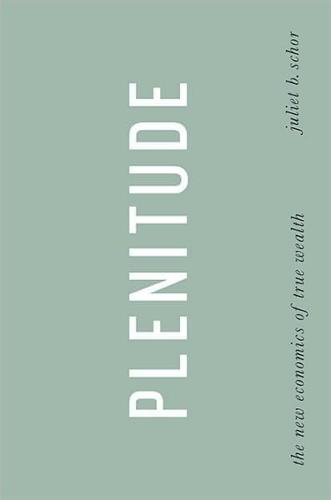
Plenitude: The New Economics of True Wealth
by
Juliet B. Schor
Published 12 May 2010
The rebound effect occurs when that lower price induces consumers to buy more energy, which in turn partly or wholly cancels out the engineering improvements. There is now a substantial literature on rebound effects. They were first identified by the British economist William Stanley Jevons, who found that improvements in the efficiency of coal use led to increased consumption of that resource. The Jevons paradox was resurrected in 1980, when the economists Daniel Khazzoom and Leonard Brookes used it to analyze the gains in energy efficiency of the 1970s. They argued for a strong version of rebound, in which efficiency improvements actually increase the demand for energy. If true, it’s a classic case of blowback.
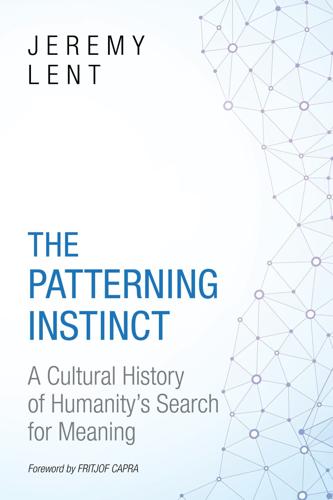
The Patterning Instinct: A Cultural History of Humanity's Search for Meaning
by
Jeremy Lent
Published 22 May 2017
Whereas the Romans experienced diminishing returns from military expeditions, we are receiving diminishing returns as the oil companies mine the furthest reaches of the globe for fossil fuels. Like the Romans, we've used up the low-hanging fruit. Can technology save us? Tainter thinks not. He points to what is known as the “Jevons paradox,” which shows that whenever technology makes the use of a resource more efficient, this only increases its use, as consumption goes up to exploit the new efficiencies. The oil industry's recent desperate rush into tar sands and “fracking” seems to confirm Tainter's thesis, as our global economy invests billions of dollars into technological solutions to extract ever more fossil fuels, even while their carbon emissions are threatening the future of our civilization.24 Many have looked at this situation and arrived at the same gloomy prognosis.
…
See International Monetary Fund imperialism Christian justification for, 311–12 cultural, 17–18 European, 16, 18, 20, 91, 273, 293, 300–315 British, 248–49, 308–309, 311–14, 382–83 New World, conquest of, 306–12 Portuguese, 303 Spanish, 306–308, 309–12 European mind-set and, 301–307, 315, 329, 333 pseudoscientific justification for, 16, 313–15 Inca Empire, 113, 307, 309, 310 Incarnation, 227–28, 339 India Alexander the Great's invasion of, 304 Arab knowledge of, 317, 318 British colonization of, 248–49 “colonies” of, 305–306 indentured laborers from, 313–14 modern, 19–20 Muslim invasion of, 248 partition of, 505–506 religious tolerance in, 247–49 See also Ashoka Indian civilization and thought, 114, 161–77 Aryan sources of, 133–36, 138, 162–65, 173, 483 atman/Brahman identity in, 165–66, 171, 172–73, 174 Brahman in, 165–69, 174–75, 177, 261 Buddhism in, 249, 252 Chinese thought, contrasted with, 180, 185, 188, 190–91, 210, 252, 261–62, 520 dualism in, 172–73, 177 Five Great Sacrifices in, 164 Greek thought, compared with, 136, 161–62, 166–71, 175, 177 Harappan sources of, 130–33, 162–65 interiority in, 164–65 mathematics and, 319 reincarnation in, 163–64, 166, 254 religious tolerance of, 247–49 senses, renunciation of, 167–69, 177 shamanic sources of, 173–75 transcendence in, 162, 177, 210 Vedic synthesis, 163–66 Yoga in, 163–66, 171–73, 176, 185 See also Sanskrit; Upanishads Indo-European languages, 133–34, 137, 140, 162, 205–207, 302 Sapir-Whorf hypothesis and, 198–99 Indra, 137, 162 Industrial Revolution, 18, 313, 324–25, 330, 350, 378, 383, 434 inequality agriculture as source of, 110–11, 112, 297–300 global, 315, 377, 386–88, 428–33 sedentism as source of, 105–106 in United States, 386, 437, 530 Inquisition, 335, 347–49 International Monetary Fund (IMF), 385 internet artificial intelligence and, 422–23 effect of, 407–408 emergence, as example of, 367–68 human superorganism and, 426–28 language, compared with, 57–58, 59 social transformation, potential for, 439, 541 “Investigation of Things” (ge wu), 262–64 Inward Training, 210 isfet, 120–21 Islamic civilization and thought Christianity, conflict with, 246–47, 273 European thought, contrast with, 354 extent of, 318 Greek thought, relation to, 319–21, 341–42 natural sciences, attitude to, 321–24 religious divisions within, 320–23 religious intolerance of, 246, 322–23 scientific achievements in, 319–20 scientific revolution, “failure” to achieve, 320–24 Israel, 104, 223 Jewish people, as name of, 216 nation, biblical, 144, 217–20, 241–43 Israelites. See Jewish people Jainism, 164, 247, 248 James, King, 270 Japanese culture, 212 language, 207 Jefferson, Thomas, 383 Jericho, siege of, 242 Jerome, Saint, 230 Jerusalem, 217–20, 246–47 Jesus. See Christ, Jesus Jevons paradox, 415 Jewish people, 140, 223 anti-Semitism toward, 245–46 Christianity, relation to, 227 as Hebrews (Israelites), 215–20, 241–43 history of, 217–20 jnana, 136, 169 John (apostle), 227–28 Jones, Sir William, 133 Josiah, King, 218–19, 222 Judah, kingdom of, 217–18, 220 Justinian, Emperor, 245 Kaifeng, 251, 273 Kalinga, 304–305 Kangxi emperor, 250 Kanzi, 48 Karnak (temple complex), 122 Kasparov, Gary, 423 Katha Upanishad, 167, 168–69, 169–72, 174, 488 Kauffman, Stuart, 371 Kauffman, Yehezkel, 221 Keats, John, 362 Keeley, Lawrence, 95–96, 470, 474 Keeling, Charles, 392 Kena Upanishad, 171 Kepler, Johannes, 282, 345–47, 349, 351, 523 Khan, Kublai, 272–73 Khwarizmi, Muhammad ibn Musa al-, 319 kilin, 329 Ki-Moon, Ban, 395 Kindi, Abu al-, 319, 321–22 kittum, 130 Korten, David, 387–88 Koyukon people, 84–85 Krauthammer, Charles, 287 Krishna, 174 Kuhl, Patricia, 60–62 Kuhn, Thomas, 372 !
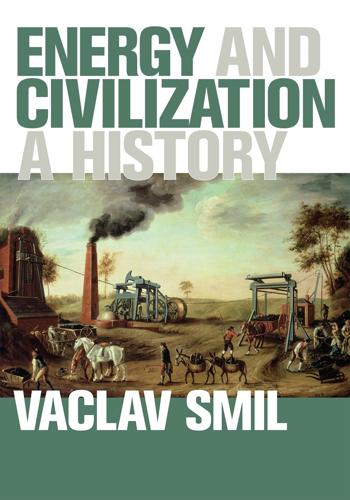
Energy and Civilization: A History
by
Vaclav Smil
Published 11 May 2017
There are fundamental (thermodynamic, mechanical) constraints to these improvements, but we have pushed some processes close to the practical efficiency limits, though in most instances, including such common energy converters as internal combustion engines and lights, there is still much room for further improvement. Box 1.6 Efficiency improvements and the Jevons paradox Technical advances have brought many impressive efficiency gains, and the history of lighting offers one of the best examples (Nordhaus 1998; Fouquet and Pearson 2006). Candles convert just 0.01% of chemical energy in tallow or wax to light. Edison’s light bulbs of the 1880s were roughly ten times as efficient.
…
New actualistic data on the ecology and energetics of hominin scavenging opportunities. Journal of Human Evolution 80:1–16. Pogue, S. 2012. Use it better: The worst tech predictions of all time. Scientific American http://www.scientificamerican.com/article/pogue-all-time-worst-tech-predictions. Polimeni, J. M., et al. 2008. The Jevons Paradox and the Myth of Resource Efficiency Improvements. London: Earthscan. Polmar, N. 2006. Aircraft Carriers: A History of Carrier Aviation and Its Influence on World Events. Vol. 1., 1909–1945. Lincoln, NB: Potomac Press. Polmar, N., and T. B. Allen. 1982. Rickover: Controversy and Genius. New York: Simon and Schuster.
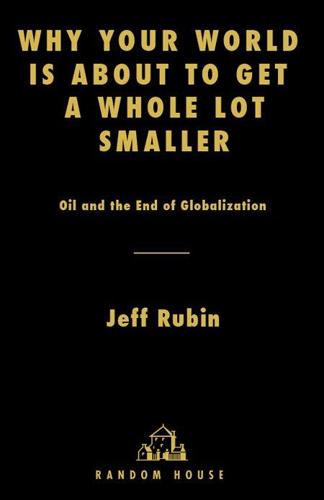
Why Your World Is About to Get a Whole Lot Smaller: Oil and the End of Globalization
by
Jeff Rubin
Published 19 May 2009
Aside from Colin Campbell, Matt Simmons, whom I once shared a podium with many years ago in Calgary, was one of the first people to alert me about the growing dangers of oil depletion. He has been a lonely but very prescient voice for decades now in the US oil and gas industry. CHAPTER 3: HEAD FAKES p. 87: Daniel Khazzoom and Leonard Brookes are modern day exponents of the Jevons paradox. Both Khazzoom and Brookes independently studied the impact of energy saving measures on energy consumption following the two OPEC oil shocks. Their counter-intuitive finding that gains in energy efficiency boost energy consumption instead of promoting energy conservation is now frequently referred to as the Khazzoom-Brookes postulate.
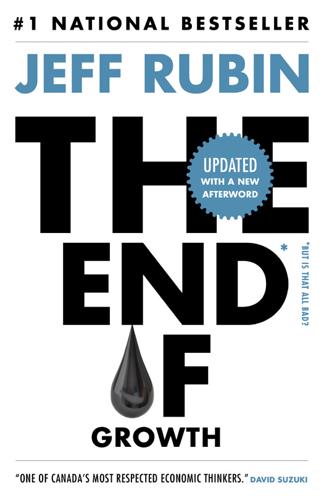
The End of Growth
by
Jeff Rubin
Published 2 Sep 2013
At the turn of the last century, Britain exported almost a third of its total coal production. By 2010, the UK was importing almost 60 percent of its coal. Resource depletion in domestic coalfields was first documented in the 19th century by British economist Stanley Jevons. He’s the namesake of the Jevons paradox, a concept that points out how an increase in the efficiency of resource extraction leads to an increase in resource consumption. For a discussion of the paradox, also known as the rebound effect, see pages 118–29 of my first book, Why Your World Is About to Get a Whole Lot Smaller (2009). this page: Japanese regulations require reactors to close every thirteen months for maintenance and inspections.
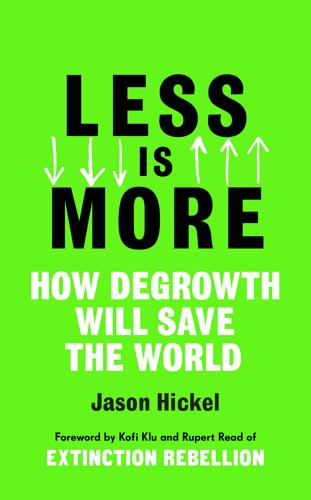
Less Is More: How Degrowth Will Save the World
by
Jason Hickel
Published 12 Aug 2020
But oddly enough, exactly the opposite happened: coal consumption in England soared. The reason, Jevons discovered, was that the efficiency improvement saved money, and capitalists reinvested the savings to expand production. This led to economic growth – and as the economy grew, it chewed through more coal. This odd result became known as the Jevons Paradox. In modern economics, the phenomenon is known as the Khazzoom-Brookes Postulate, named after the two economists who described it in the 1980s. And it doesn’t just apply to energy – it applies to material resources too. When we innovate more efficient ways to use energy and resources, total consumption may briefly drop, but it quickly rebounds to an even higher rate.
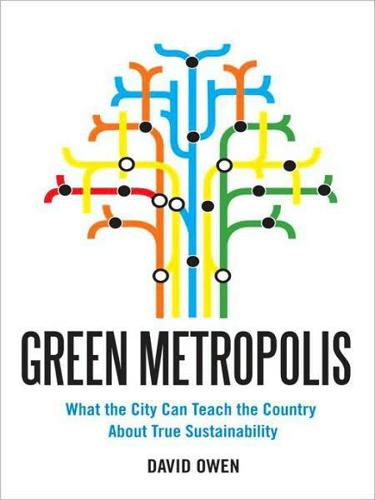
Green Metropolis: Why Living Smaller, Living Closer, and Driving Less Are Thekeys to Sustainability
by
David Owen
Published 16 Sep 2009
How people react to increases in energy efficiency is a question of environmental significance. In 1865, the British economist William Stanley Jevons, in a book called The Coal Question, observed that coal consumption had increased, rather than declined, following the introduction of steam engines that used less of it—a phenomenon still known as the Jevons Paradox.48 Whether you find it paradoxical may depend on how closely you observe your own behavior. Internet usage is analogous. The evolution from dial-up connections to cable connections, which are hundreds of times faster and therefore enable users to complete in seconds tasks that used to take minutes or hours, did not lead to a steep drop-off in connection time; on the contrary, that tremendous gain in efficiency helped to foster an even huger increase in usage.

The Classical School
by
Callum Williams
Published 19 May 2020
“His main mistake”, says John Bellamy Foster, “was to underestimate the importance of coal substitutes such as petroleum and hydroelectric power.”2 In no way did Britain’s coal supply restrict economic growth over the 19th or 20th centuries. But one bit of Jevons’s reasoning has survived the test of time. He proposed what came to be known as “the Jevons paradox”. Jevons wondered whether Britain could reduce its consumption of coal with a view to postponing the day when the stuff ran out altogether. He dismissed that idea out of hand. In fact, he thought that as energy efficiency improved, energy consumption would rise, rather than fall. As the cost dropped, the means of using energy would be brought within the reach of more people.

Cities Are Good for You: The Genius of the Metropolis
by
Leo Hollis
Published 31 Mar 2013
Since 2008, Sweden has led the world in purchasing green cars, but car emissions have steadily increased. It appears that while the newer, more efficient cars produce less carbon emissions, the drivers have increased the amount of time they spend in their cars. Why this might be is a cause of some controversy. For some, such as New Yorker and writer David Owen, this is an example of the Jevon Paradox, named after the Victorian English economist William Stanley Jevon, who proposed that as technology makes energy use more efficient, we are likely to use more of it, rather than less. Cleaner engines, therefore, might reduce emissions; they also encourage us to increase car usage. This, in the end, will more than likely result in still too many cars in the gridlock.
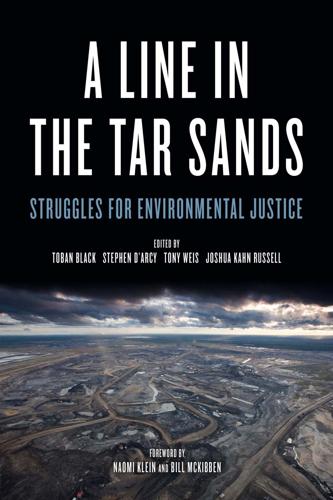
A Line in the Tar Sands: Struggles for Environmental Justice
by
Tony Weis
and
Joshua Kahn Russell
Published 14 Oct 2014
So while new technologies can indeed decrease the relative impacts of production, this focus fails to mention how efficiency gains are often offset by the growth in overall production, a well-established tendency in the history of resource exploitation in capitalism that is referred to as the Jevons paradox. The point is that technological innovations are being driven with the goal of enabling both increasing profitability and increasing volumes of bitumen extraction. The imagery of technological solutions is also coupled with a portrayal of the tar sands as a highly regulated industry, when regulations have in fact been limited, geared towards facilitating expansion, and often gone unenforced.21 For example, a recent television advertisement by the federal government claims that it is “protecting the environment with new fines for companies that break the law, returning developed land to its natural state, increasing pipeline inspections by 50 percent, [and] requiring double hulls for tankers,”22 claims that are very clearly designed to neutralize some of the criticisms associated with the Northern Gateway pipeline proposal by appealing to innovations in technology and legislation. 5.

The Rational Optimist: How Prosperity Evolves
by
Matt Ridley
Published 17 May 2010
Silicon chips use so little power that they are everywhere and in aggregate their effect mounts up. A search engine may not use as much energy as a steam engine, but lots of them soon add up. Energy efficiency has been rising for a very long time and so has energy consumption. This is known as the Jevons paradox after the Victorian economist Stanley Jevons, who put it thus: ‘It is wholly a confusion of ideas to suppose that the economical use of fuel is equivalent to a diminished consumption. The very contrary is the truth. As a rule, new modes of economy will lead to an increase of consumption.’ I am not saying fossil fuels are irreplaceable.

Aurora
by
Kim Stanley Robinson
Published 6 Jul 2015
The plateau after the leap, the big S shape of all life, perhaps; in any case of the population growth patterns as first calculated by Verhulst in the nineteenth century, and since shown to be common in many other processes. So, the logistic function, as applied to history. Or has humanity enacted its own reversion to the mean, and become in some ways less than they briefly were? Fulfilled the Jevons paradox, and with every increase in power increased their destructiveness? Thus history as a parabola, rise and fall, as so often postulated? Or cycling, always rising and falling and then rising again, helplessly, hopelessly? Or a sine wave, and in these last two centuries on a down curve, in some season of history invisible to them?

The Survival of the City: Human Flourishing in an Age of Isolation
by
Edward Glaeser
and
David Cutler
Published 14 Sep 2021
But Peel’s technological innovations didn’t lead to joblessness, any more than efficient Boulton and Watt steam engines led to a conservation of coal. The great English economist Stanley Jevons noted 150 years ago that more efficient engines led to more coal consumption, because people figured out more uses for steam engines that used less fuel and were consequently less costly to operate. That Jevons paradox is relevant almost everywhere. Electric cars emit less carbon than conventional cars, but they are also cheaper to drive longer distances. Thus, we should expect additional driving encouraged by electric vehicles to undo some of the energy savings created by more fuel-efficient engines. The global industrial boom of the nineteenth and early twentieth centuries reflected a vast increase in the use of machines to produce thousands of different and often new products.